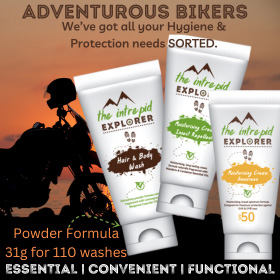 16Likes 16Likes
 |
|

18 Feb 2012
|
|
Registered Users
Veteran HUBBer
|
|
Join Date: Mar 2010
Location: Bucharest, Romania
Posts: 117
|
|
|
Keep Pressing The Button
Zambia 28/01- 07/02
Where were we...


We had arrived here by pure chance, looking for just a place to sleep one night before crossing the Namibian border. Since entering Zambia we had also entered anonymity: nobody cared, nobody gave a second look, almost no hand raised for hello, almost no smile returned. But, unknowingly, we had arrived where we needed to be. We had found on the border of Nsogwe canyon our own Dharma Initiative, another special encounter on this trip. 6 years ago a South African ex-consultant for Camel Trophy founded here Overland Missions ( Overland Missions Any Road... Any Load... Any Time...).
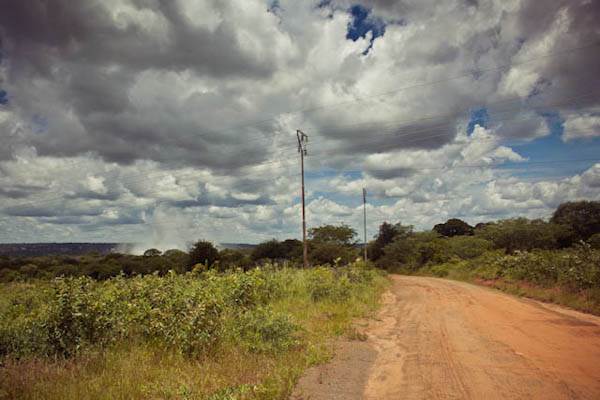
The Smoke That Thunders, visible on the way to the camp.
Vic Falls Panoramas



Mostly American missionaries come here every dry season to learn about working in remote areas, where they will teach villagers how to care for themselves, how to farm the land in a sustainable manner, how to build wells for drinking water. The projects follow two objectives: SAM (organic agriculture + drinkable water wells) and LIFE (education, consoling, family planning). Overland Missions provides knowledge, loans the money needed, then retreats: the villagers are involved from the beginning in the projects, then are left to manage alone, with a minimum of guidance. Work is the payback, nothing comes for free. Ana was just reading a book ("Dead Aid") written with the very same thesis by the Zambian Dambisa Moyo. The money carelessly pumped into Africa for decades is not helping. It hurts the Africans, killing creativity, making people and countries dependable on aid, unable to sustain a living economy. Aid feeds corruption and civil unrests.
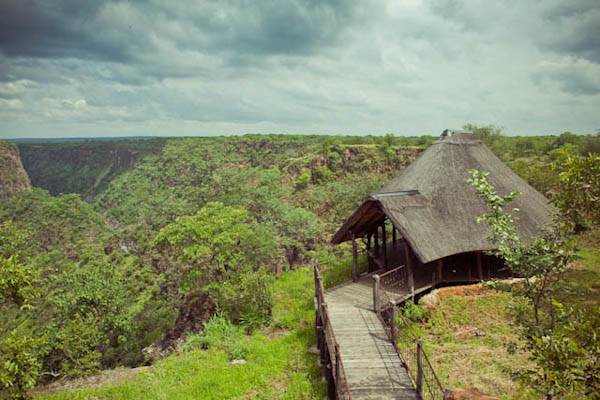
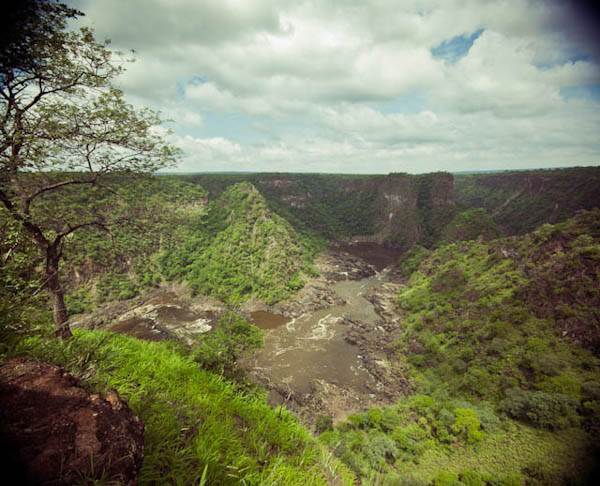
The base is quite vast: tents for the trainees and staff, gingerbread-like homes built in Zambian style, a center with communal kitchen, living room, braai terrace, open classroom, an organic garden, garage, showers, laundry facility. Lovely vernacular structures with a minimalist twist, in one of the most stunning places we have ever been. It was rainy season, the regular trainees were not around, so we were alone, with the few staff actually living on the property. It made sense when the blue eyed man who received us said that his name was Jacob. If you have seen Lost, you get what we mean. Jacob is the leader of this community and has been living on the property from the beginning with his wife, Jessie, their kids and their black labrador. They have a 2 year old daughter, Kya and they have adopted a Zambian girl who turned 6 the week we were at the base. The night of our arrival we had dinner together with them and their friend and colleague Laura. So instead of staying for one night, we lingered for one week, getting to know and care for these people who have chosen to leave the security and safety of the USA, to teach and help others. Their work also includes an orphanage, a pre-schooling project, and the list could go on. It comes to no surprise that they are beautiful, talented musicians and very very smart. In this little imperfect corner of perfection they are living with a purpose that gives them everyday strength and joy. We cooked together, enjoyed rooibos and cake at the wonderfully Victorian High Tea at the Royal Livingstone, we hiked into the gorge, shared two emotional Sunday mornings and had some of the most challenging and engaging conversations in years. Touched by the friendship these people offered, thankful for love they shared. There are many fantastic places around the world where heavens meets the earth, with only few accessible on foot. This is one of them. It gave us strength, it allowed us to meditate at our purpose in this quest that has been going for 8 months.


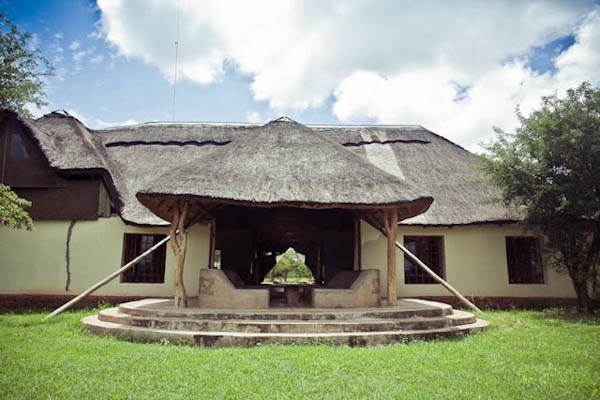

Indian trees

Play time

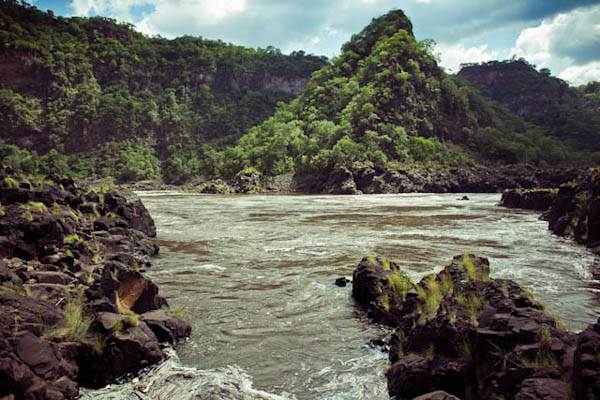
Hike into the canyon

Hippo paw. Bodies of drowned elephants and hippos are washed here, the meat taken by villagers, the bones left to dry out on the rocks.
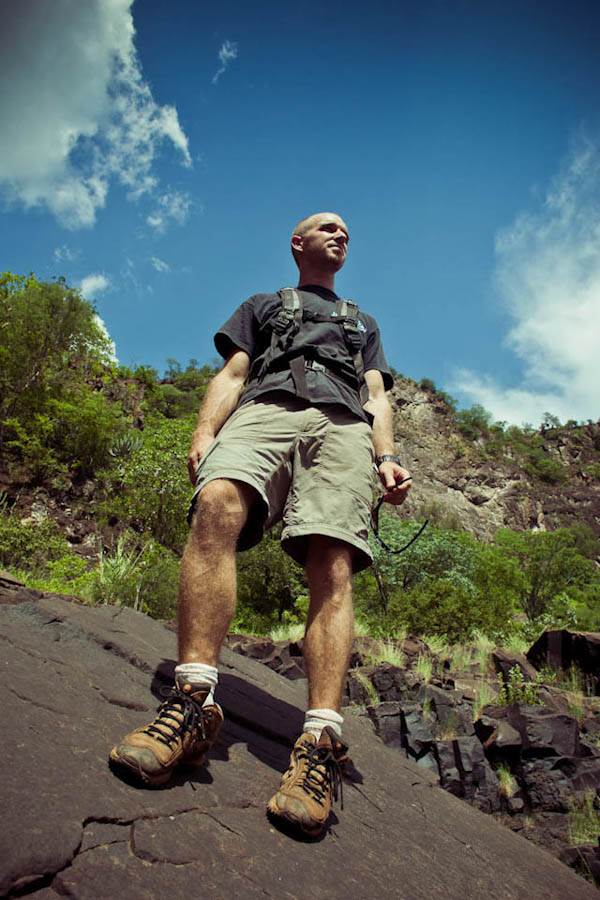
Jacob

Ana, Sunda, Jacob
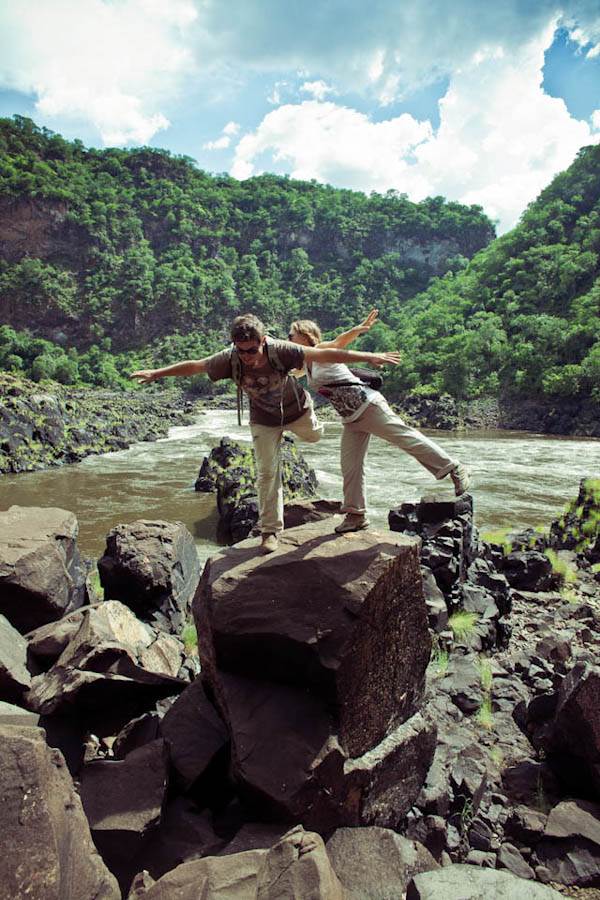
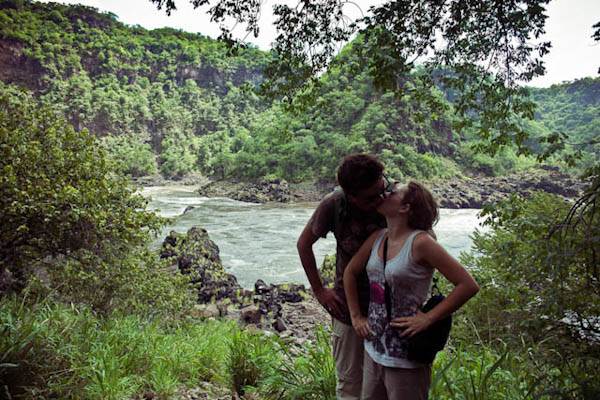
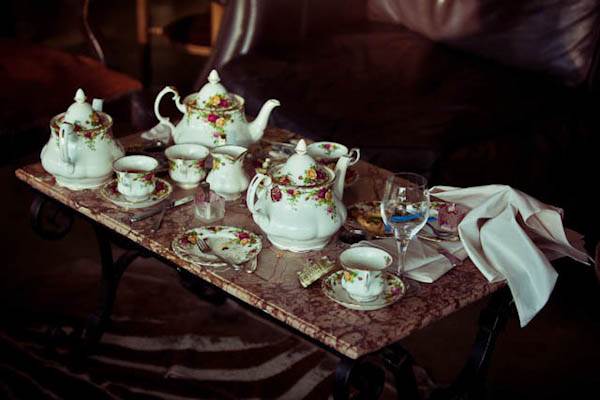
Tea and cakes at the Royal Livingstone
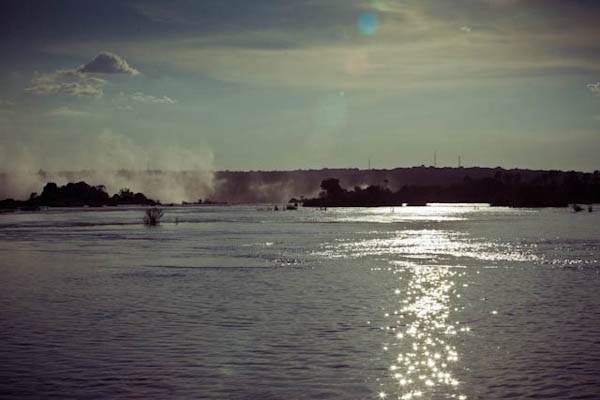
View from the hotel terrace
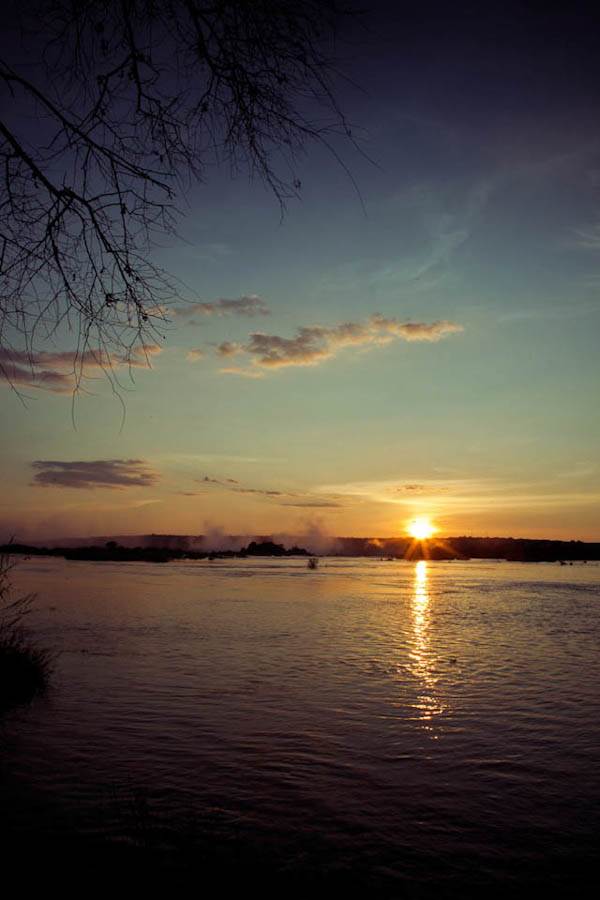
Zambezi sunset
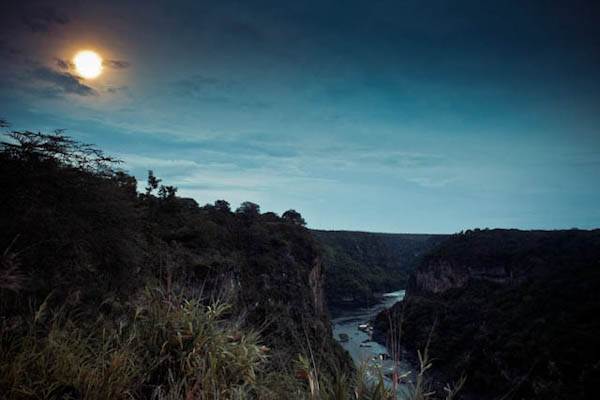
Moon over the canyon, Nsogwe village
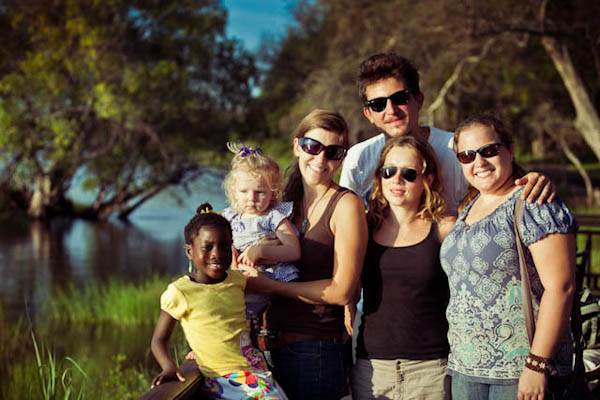
Sunda, Kya, Jessi, us, Laura
Then it was time to go. Difficult to leave, this place had become our home, these people had become our friends. Would we see them again? We could hear the calling of the savannah, of the copper Namibian dunes. And this time we knew: the answer to our questions was not here, was not there, it was inside.
__________________________________________________ _______________
Cooking and Wildlife Viewing in Nsogwe, Livingstone
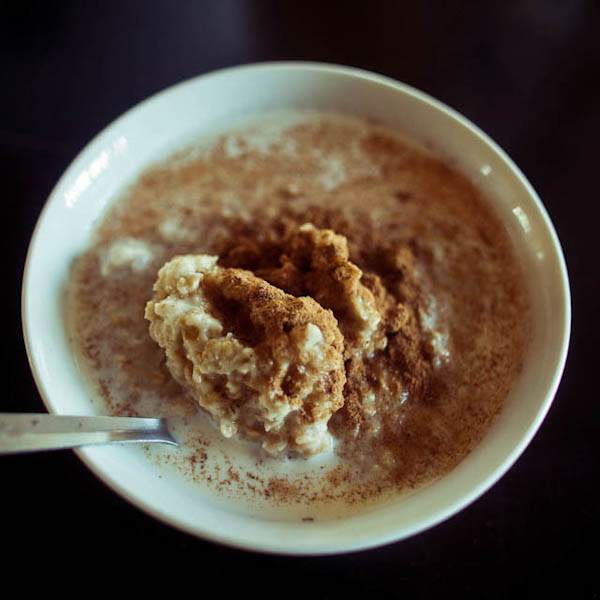
Breakfast: oats with milk, cinnamon and honey

Lunch: guacamole, tomatoes, cabbage raita with Italian herbs
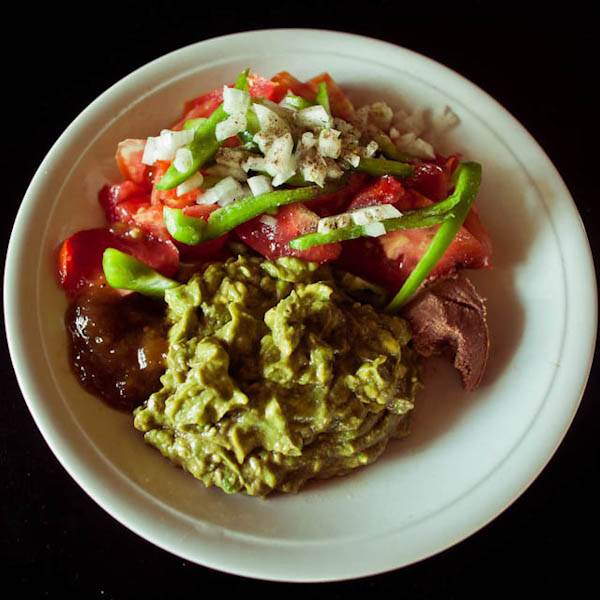
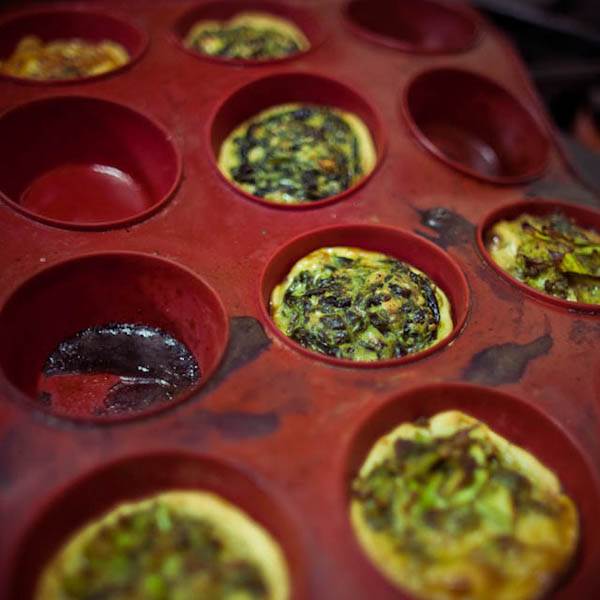
Mini-quiche with feta cheese and wild leafy greens. Taste similar to spinach, but with a superior nutritive content.

A Romanian traditional dish that we cooked here for the very first time. We had to pickle the cabbage ourselves! These cabbage rolls are stuffed with beef mince, rice, onions, garlic, herbs and spices and slowly baked with tomatoes and shredded cabbage. The dish comes from the Middle East and various countries that were influenced by the Ottomans have their own version.

Local muhsrooms
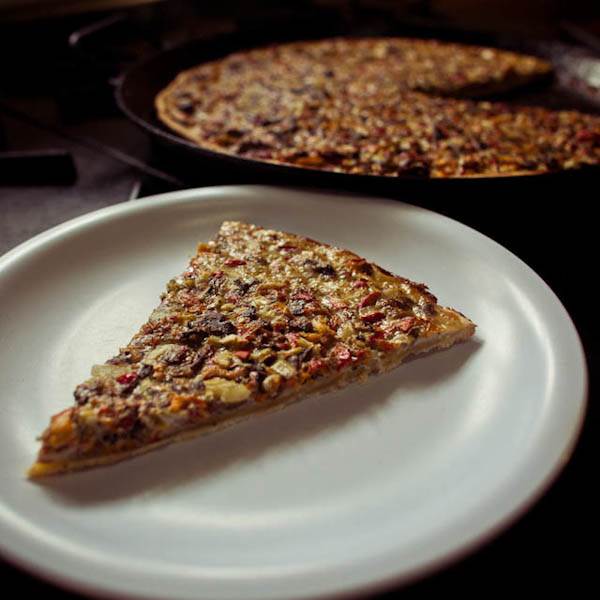
The mushrooms were mixed with eggs, peri peri peppers, basil and marjoram to bake a big quiche
In the vast gardens of the Royal Livingstone live giraffes, zebras and springbok antelopes. Our first wildlife sightings in Africa after the Afi stint.

Velvet monkey


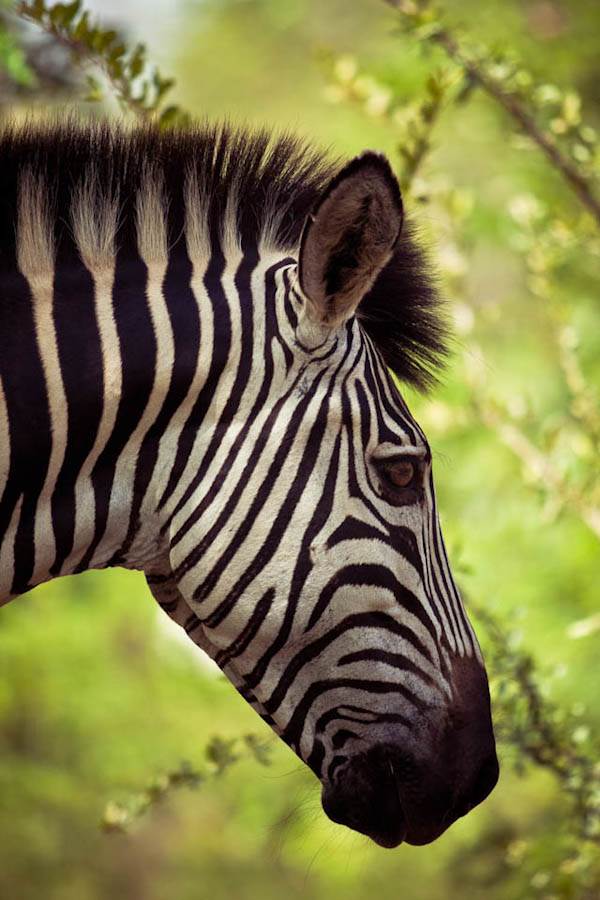
Hartmann's mountain zebra

The African football cup was underway while we were staying at Rapid 14, and soon after our departure our prophecy came true: Zambia become for the first time the champion! Long was forgotten the only incident: a spitting cobra sought shelter under our fridge, sadly ending up under the blows of Wezee.
|

18 Feb 2012
|
|
Contributing Member
HUBB regular
|
|
Join Date: Dec 2011
Location: Sydney, Australia
Posts: 39
|
|
Hey MrWhite nice to see that you guys are still going. I have been watching and reading your thread with interest. The commentary is exceptional and the photography is just brilliant. Thanks for the efforts of posting your experiences........man what a trip !! 
|

20 Feb 2012
|
|
Registered Users
Veteran HUBBer
|
|
Join Date: Mar 2010
Location: Bucharest, Romania
Posts: 117
|
|
|
Caprivi Strip & Bushmanland
Cheers JJZep!!!
Namibia 07- 11/02
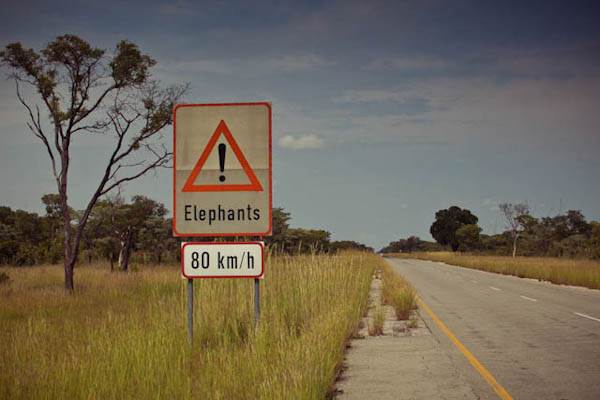
Once on the Caprivi Strip - infamous in the past for the armed ninjas that were crossing from the war ravaged Angola - we got warned that we were not alone.
First morning we woke up with what we thought to be elephants crossing from the Bwabwata national park. But we saw just foots prints and elephant feces. Wildlife remained elusive. In Katima Mulilo tarred roads and malls clearly show who is on top of the food chain in a country of more than 800.000 square Ks and less than 5 million inhabitants

Arriving 2 months later in Namibia at the Katima Mulilo border, it felt like the the beginning of the end. Our detour across DRC through Zambia had brought us in the Caprivi Strip, the greenest and rainiest Namibian region, rarely visited by overlanders. Gone were the rickety rice and beans shacks, supermarkets had replaced corner shops, the service stations and customs offices were modern and air conditioned. The town, chuck full of malls and fast food joints. For a moment we were trapped by the tricks of a familiar world: receipts for every shopping, Gouda cheese, whole wheat bread, chocolate, discounts, air conditioning, mobile network. But the novelty wore off quickly. The impeccable tarmac took us through San villages (ethnics famous for the click sounds that articulate their language). Mud huts were tucked behind a layer of greenery, after all rain falls here almost year round. And when the rains have been plentiful, the river that crosses Caprivi spills over, flooding the fields of northern Botswana and creating a lush water paradise in search of which immense herds of animals march for months: the Okavango Delta.
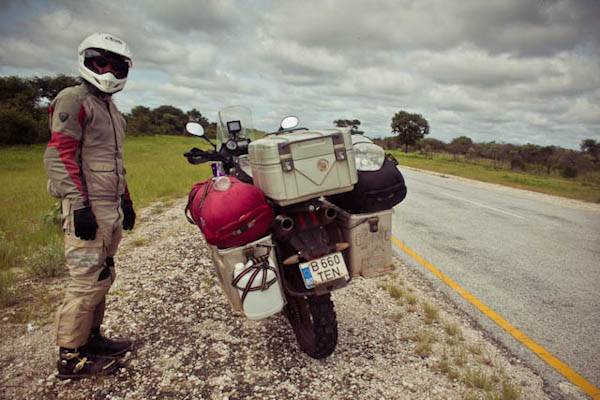
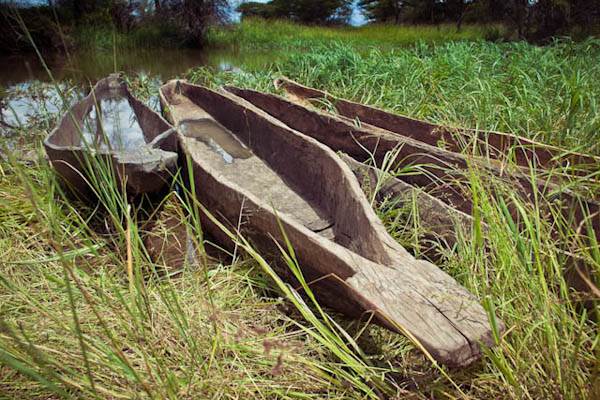
Traditionally the Okavango is crossed on mokoro boats

And the more refined version of mokoro, for visitors.

Okavango
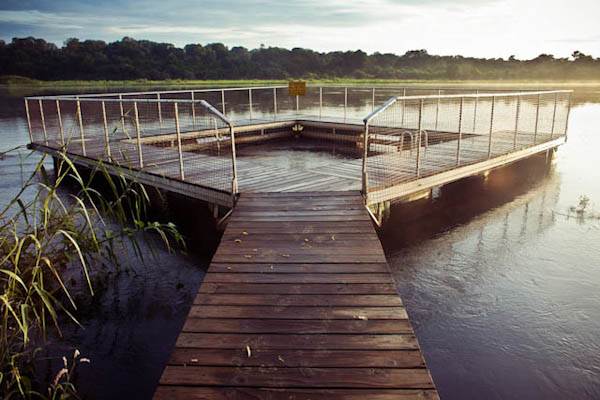
We stopped for a night on the Okavango river, in a camp with pool in cage, to protect the tourists from the hippos and crocs. A first sighting of Botswana, where we planned to go later on.
In the afternoon we saw a small group of elephants grazing over the river, on their way to the Okavango Delta. Our expectations deceived: 8 months in Africa, thousands of kilometers through thick jungle or savannah, bushcamping in remote spots, and we had hardly seen a few wild animals, if any at all, and always from great distance. Then, the following night, I got attacked by a hippo.
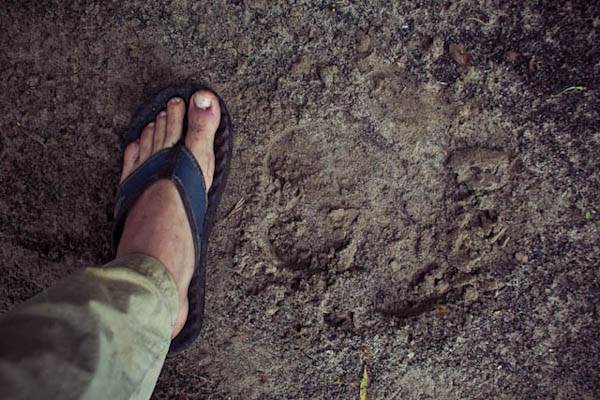

The story goes like this: we pitched out tent near the water. Rain came overnight, we were unaware that the others, tourists and staff, had sought shelter in the bungalows. And nobody bothered to tell us anything. Around midnight I heard a splash in the river and I went out to see where that came from. The hippo who was grazing 4 meters away, head barely above the water, must have felt he was being challenged, so he charged. I shouted, trying to wake Ana up, I stumbled on her legs and fell over, so she screamed. The hippo got even more scared than us and slipped while trying to climb out, so it gave up, exiting the river 5 meters away, through the next camp site. I thought I saw it from behind, disappearing in the night, but as we walked all over the camp trying to find someone to talk to, I convinced myself that I had imagined the whole thing. There was complete silence, nobody around, how could there be hippos roaming the camp? But in the morning the foot prints were all over the place.
We found out that two cheeky hippos do sometime dare to graze here in the night, the idea is to stay inside the tent, and you're safe. We didn't get the chance to face the hippo again, cause it started raining cats and dogs again. We had stitched the tent in Zambia, but it was still leaking, so we had to leave in search of drier places.

Destination: Etosha, with stopover for groceries in Tsumeb, the Namibian mining center (silver, lead, germanium, cadmium). What a strange artificial town, American feel after decrepit villages, no local markets, no street food. White people with 4x4s, crappy Internet for 10 Euro/hour, groups of boozed San ethnics (Bushmen) gathered to beg and wait in front of the Spar supermarket. The hunter-gatherer San communities, under constant pressure from the Khoi-Khois, the Hereros and the colonists, has almost disappeared, absorbed or enslaved, pushed to the limit of survival, the limit of existence.
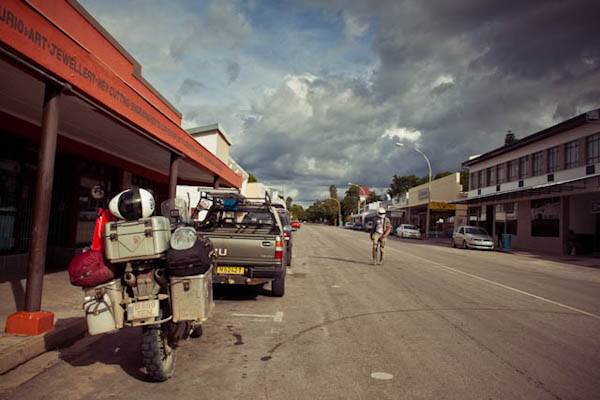
Tsumeb

Nambian lunch: beef with maize porridge
On the way to Etosha we took the chance to step on extraterrestrial soil: the Hoba meteorite, the largest that fell on our planet; 60 t, most of it iron, but discovered only in 1920.

One cannot walk o alien rocks, so I had to balance while levitating.
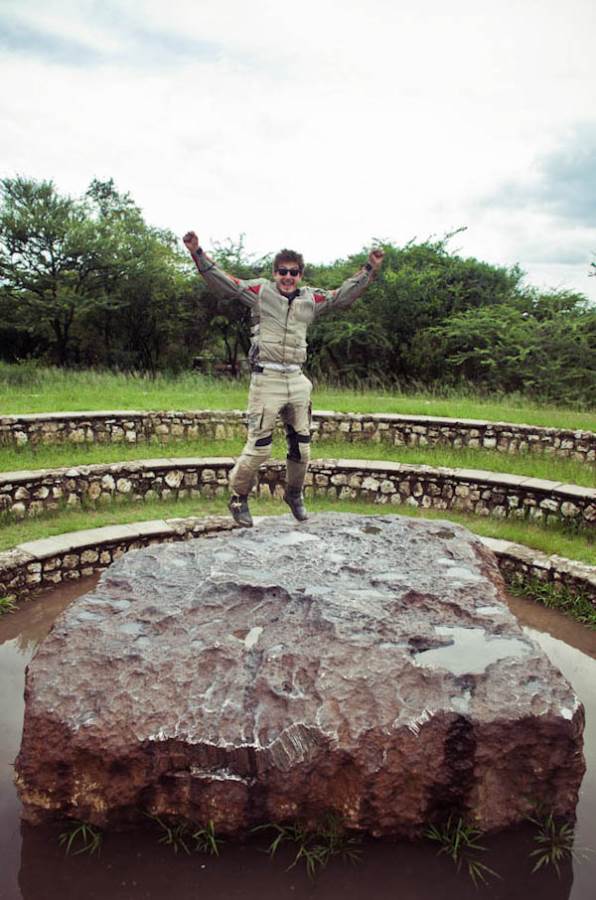
Memory from outer space.
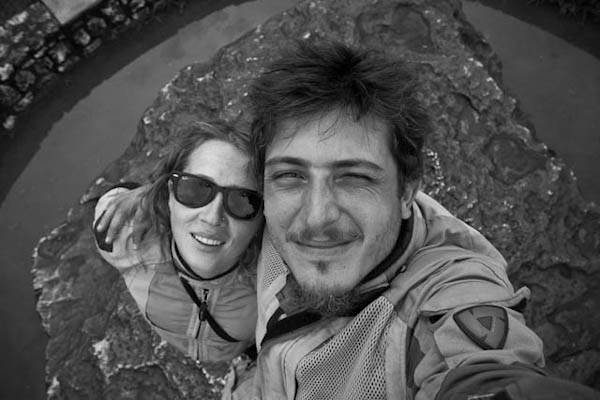
|

4 Mar 2012
|
|
Registered Users
Veteran HUBBer
|
|
Join Date: Mar 2010
Location: Bucharest, Romania
Posts: 117
|
|
|
We Get Pwned
[still] Namibia 14-24/02
Damaraland

The gravel road unwound through some of the most thinly populated and driest Namibian countryside. Long before we ever learnt about this place and dreamt of riding our bike across, its native nomadic inhabitants, the hunter-gatherer San (Bushmen) and the herders Khoisan (Hottentots) had been almost entirely chased away by white settlers, missionaries and venturers alike. Leftover villages were scattered in the [insert yawn here for the predictable adjective] vast territory. From time to time a Himba man with his cattle would appear in the horizon, a speckle in the infinite stretch of ochre, white and blue.
As time passed by, the occasional paths stopped turning into the bush to indicate a village or the remains of it: we were finally alone, hundreds of miles between us and the next human settlement. This was Damaraland, one of the driest environments on Earth.

A chameleon crossed our path, so we stopped to check it out (sorry for the man-handling little fella').

Above the barren veld rose a flat gradient of blue. Thorny shrubs, tufts of grass and acacia trees swarmed the reddish earth like stubs of hair on an unshaven face. We drove across this sameness for hours, like an alien craft interrupting the astonishing vacancy of the veld. No typical African mud-and-dung huts, nobody walking with their stuff on their head, no women crouching alongside the road, waiting for a lift. No-one. Then the gravel lost its tan and shone white in the midday haze. Luring us to push on, the Khowarib Gorge, where the land suddenly swelled from zero to 1600m.



In the 20s Germany had to let Namibia go, so the country went to join the Southern-African Union. Until the 1990 independence some 6000 fenced farms were leased or sold by the aperheid government to the new white settlers who flocked in, leaving the "natives" no option but make house in the 10 "reserves". In the North there was Kaokoland (nowadays Kunene), home to Herero and Himba; the fringes of Kalahari in the South-East became the last frontier of the San; the Topnaars retreated to the Namib. And on the central plateau the Damara, one of the three groups that use a click-accented dialect, established Damaraland. Even today the arid territory is not officially protected, but offers sanctuary to wildlife: zebra, Springbok, Oryx, Kudu, giraffe, suricates, birds and reptiles. Rumor has it that even desert elephants and lions still roam some of the more remote corners of this veld. And this time the animals that wandered about were not unfazed by our sudden and noisy apparition, like the Etosha herds. The encounter would last only for a brief moment, leaving us dumbfounded, wondering if it had been a day-dream or not.
Soon the Grootberg pass forced the road towards east. A jacquard of lava lingered under brittle grasses, few meters high cactuses and freakish stumpy trees with water-filled torsos.


Clusters of enormous rocks were laying around in the fuzzy veld, strange toys forgotten behind by some nowhere-to-be-seen giants.

Pass the granite Lego, we rolled into Kamanjab, where the newest overlanders' joint (complete with overland album where we could spot familiar faces like Margus & Kariina, Alper & Esther, the Vidals) welcomes non-African vehicles for free. Our original plan was to take our first shower in a week, do some launder and feast on the famous Namibian farmed game, but Oppi Koppi was to become more than just a pit stop for us, protein hungry, dirty vagabonds. For one, as we arrived on the infamous 14th of February, we celebrated the Valentine's Day for the first time, the main incentive being the specials on the menu: butternut soup, zebra sirloin with veg and, yes, ice-cream! As camping was free, splurging on the very reasonable dinner set menu was a no-brainer.


And as South Africa was already on our radar, it was time to start practicing our braai skills, sporting boerwors, farmed game and the famous termite mushrooms we had chased in vain in Etosha a week ago.






The rest camp was a hippy garden of sorts: prickly bushes, cactuses, pod bearing trees that Ana felt inspired to wear as instant jewelry.



An unedited photo with our campsite scalded in the surreal sunset.
 Malaria Scare
Malaria Scare
Two days later we were ready: showered, shampooed, hairstyles, well rested. We had started to get used to and take for granted all these first world luxuries - heated water (actually running water), T.P., electricity and easily available plug, right by the tent. Long were forgotten our scruffy days in the Congo, when we would save any drop of water and milligram of soap, washing our hands by squeezing a tuft of grass heavy with morning dew. But one of the bad memories, if not the worst of them all, was to come back and haunt us once more.
That dreadful morning debuted with a weird feeling in my stomach. By midday my bones and knuckles were aching like hell. At night I was sporting a decent fever, but not too high, so we decided to postpone our departure, to see what was up with that. The next day the cycle restarted: more fever, more head aches… al day I was laying down in my tent, powerless, weaken. The paranoia was on: Ana was reliving the Matadi moment, I was growing more convinced by the hour that I had malaria. On top of all these, we knew that Esther, with whom we had traveled in Congo and who was a bit ahead of us now together with Alper, has been hospitalized in Windhoek with malaria. She had started the treatment with some delay, maybe a couple of days, and she was now suffering from kidney failure, a common but nasty malaria complication. She had been receiving dialysis for about a week and she was about to be repatriated in Germany. Their adventure was over. We decided it was not the moment to take risks, so I started taking Lonart, an equivalent of Qartem, immediately.

Malaria candy, bought from Zambia.
The next morning we were helped by locals to summon medical assistance at the newly built, but quite desolated village clinic. They had malaria tests alright, the kind that had already been proven unreliable in Ana's case. I had already taken 2 doses of antimalarial medicine, of course the test came out negative. A proper blood test was available only 500 ams away, in Windhoek. And the nurse, who I can't imagine had ever treated or even met someone with malaria, assured me I was fine. 10 euros and two cute ziplocks with Indocid and multivitamins later, I was back home. And back on Lonart.

Pain-killers + multivitamins from the "doctor"
As it is the case in Romania, Europe or the US, in Namibia not a lot is known about malaria. The country is out of the severe transmission map, besides, we were in Kamanjab, a few thousands inhabitants village. My best bet was to follow the correct antimalarial treatment scheme. So I did, taking my time to recover and rest. A few days later in Windhoek it was too late to trace the plasmodium germs in my blood. So this will remain a big question mark. Was is, or wasn't it? I guess I'll never know. Three days later I was back on my horse, pushing on westwards.

Saying good-bye to Melissa, the daughter of Vital, owner of Oppi-Koppi

On the road again

The record mileage was hard to believe, even for us

The Namibian touristic agenda is quite extensive, and of course nothing is free. Lonely Planet has never been our traveling bible, so we skipped the local "must-see"s and took the sketchiest off-road route towards Skeleton Coast. Our plan was to reach Walvis Bay by sunset. The daylight had a surreal quality to it, tempering colors, melting away topographical features that were fighting for contrast under the scorching sun. Every time we would stop for a brief water break we could hear nothing but our own voices: the land appeared lifeless, smelling of heat and drought, only interrupted by twisted corpses of thorn trees without their melted Camembert clocks. The sky was wider and higher than any we had seen before, smeared with theatrical cloudscapes that kept coagulating and dispersing.

Namibian veld




It was one of the greatest rides of them all. The Namibian veld dissected by this adrenalin-pumping clutch-burning tyre-roasting road. We were discovering it kilometer by kilometer of rock crumble, stopping at a vantage point from which we could view it all. Rushing up on a blind hill, bent down into a corkscrew like the famous Laguna Secca turn. This stretch would make a beautiful rally stage, negotiating a water thirsty desert that eventually fades away into the ocean ravaged Skeleton Coast. It was rainy season, but rain rarely falls here. All the river beds were dry, their sandy bottoms ghostly reminders of a once breathing body of water. At some point we took a small road, a thin line on the map, and got lost for some time in a labyrinth of sandy deviations.


Dry riverbed: wide, deep, sandy, difficult to cross 2up
The massive Brandberge, the "burnt mountain", towered at 2573m over the unmitigated flatness of the veld.


Then all that was left was formlessly horizontal. West, east, north and south, ever the same, only the wood poles with their sagging electricity cables still standing. The sky was smudged with cloud, and the wind was bringing in from the frozen coastal waters a salty smell of thunderstorm. Through the distant rains that were hanging down from the clouds like soaking laundry, we could barely see Mt. Spitzkoppe, to the left of the road.


Then we entered on the Skeleton Coast through a strange field of lichen in bloom (a reserve and national park).


The cold Benguela current was blowing mercilessly, so we rushed by the swish white suburbs of Swakopmund, the capital of all adrenaline-junkies. For wads of cash one can skydive, sandboard or do anything here, so this was not our place, not our budget. On the outskirts of the outskirts of the town we drove by the Topnaar township: shacks of any description in the sandy plain littered with all sorts of debris, a landscape where mountains were man-made out of trash.
We had last seen the desert 8 months ago, in Mauritania, and the Atlantic more than 2 months ago, in Gabon. We would see them both again, side by side, dunes melted right into the ocean, in the Namib Naukluft. Ochre dunes, a salty crust wrinkled over the land, ocean roaring beyond the horizon.


 Walvis Bay to Windhoek
Walvis Bay to Windhoek

Only a couple of manic gourmet travelers like ourselves could drive for hundreds of miles through the desert, bushcamp in the sketchiest spots and save every penny, in order to afford half a dozen of oysters. But we had been obsessing over the Walvis Bay oysters since 2008, and our efforts and stinginess was rewarded: the mollusks were plump, nutty, with a perfect brine. Mmmmmmmmmmmm……

It was already night when we started driving again in the direction of Windhoek. We were determined to push as mush as we could, so that we would have less Ks in the morning till the South African embassy, where we had to apply for our visa.

We had no idea when we stopped that we were bushcamping again in an exceptional place. Then the sunrise was more than convincing.



The capital city felt exhausting. From the manic streets to the black township where even the public grill was on the way to become some sort of meat mall.




But we had driven all this way only to submit our RSA visa application, a simple enough affair, we naively thought. Romania is not part of Schengen (and will not be for a long time), so Romanian citizens must apply and pay for a quite expensive visa. Immediately we understood that was not going to be easy: spartan working hours, aggressive and condescending personnel, high fees. Firstly, our application was denied: they suggested we apply in our country of origin. We considered crossing directly to Botswana and try there, or simply cut South Africa from the itinerary. The third day they agreed to take our files in, but only after we payed 85 euros in visa fees and 70 euros for the faxes that this embassy would presumably send, we were informed that we were now facing a minimum 10 working days waiting time for a response. That meant while our passports could be rotting in some drawer at the RSA embassy, our Namibian visa could expire, placing us in an even more delicate situation. We tried to plead with this people, they just don't care, though. 99% of all overlanders don't need a visa for South Africa, they just roll into the southernmost point of the continent. Is this the end of our 28000 km adventure, will we be denied access to a classic overlander's milestone? Will we have to scramble for a last minute exit out of Namibia? We just don't know. We are sad, we are hopeless, we are angry.
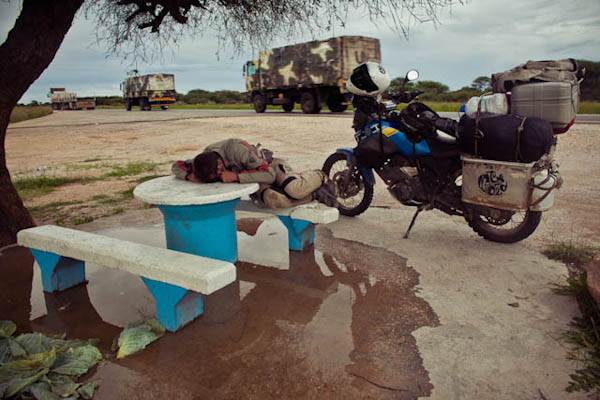 Update:
Update: a week has passed since, and nobody could be bothered to process our visa applications. We keep calling the embassy, wasting more money, more time. It feels like we hit a dead end.
|

4 Mar 2012
|
|
Registered Users
Veteran HUBBer
|
|
Join Date: Sep 2006
Location: Cornwall, in the far southwest of England, UK
Posts: 597
|
|
Great photographs. Very high quality.
Well done .. 
.
|

7 Mar 2012
|
|
Registered Users
Veteran HUBBer
|
|
Join Date: Jan 2007
Location: FRANCE
Posts: 138
|
|
|
|

7 Mar 2012
|
|
Registered Users
New on the HUBB
|
|
Join Date: Mar 2012
Location: Brussels
Posts: 1
|
|
|
Wow, what a nice trip.
I felt in love of the picture 'Enthusiasm' you took on 02/01 in Ziua. If you don't mind, I would like to print it out and display it in my house. It remembers years in Africa. Is it possible to get the large size file?
Thanks a millions
By the way, did you fix your visa issue at the Z.A border?
|

9 Mar 2012
|
|
Registered Users
HUBB regular
|
|
Join Date: Aug 2011
Location: Rhode Island
Posts: 25
|
|
|
I love this ride tail - Absolutely one of the best in terms of both details and great photographs
|

16 Mar 2012
|
|
Registered Users
New on the HUBB
|
|
Join Date: Aug 2008
Location: Windhoek, Namibia
Posts: 8
|
|
|
From Durban
Hello Mr White and Ana. We live in Durban east coast South Africa. If you come this way please call we could meet. Your pictures are great.
Enjoy the ride 
|

17 Mar 2012
|
|
Registered Users
Veteran HUBBer
|
|
Join Date: Mar 2010
Location: Bucharest, Romania
Posts: 117
|
|
|
Into the Wild
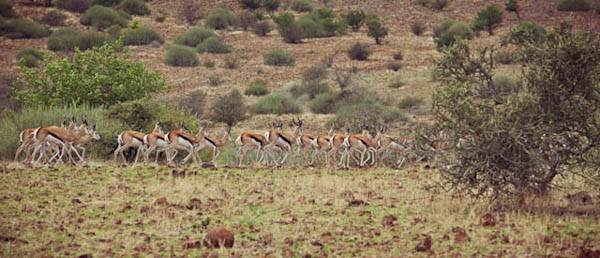
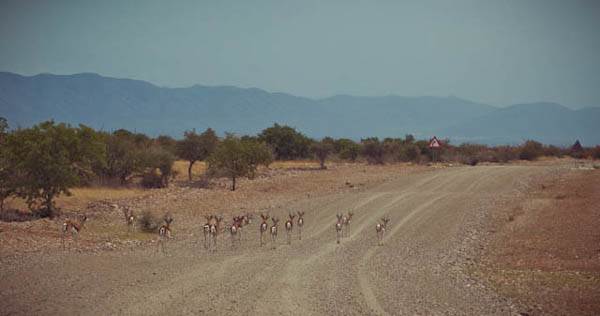

That's how our day begun: hundreds of Springboks, dozens of giraffes and oryx. We had embarked, the two of us, plus Vital (owner of Oppi-Koppi), on what was to become our own booze fueled Fear and Loathing In Las Vegas trip.
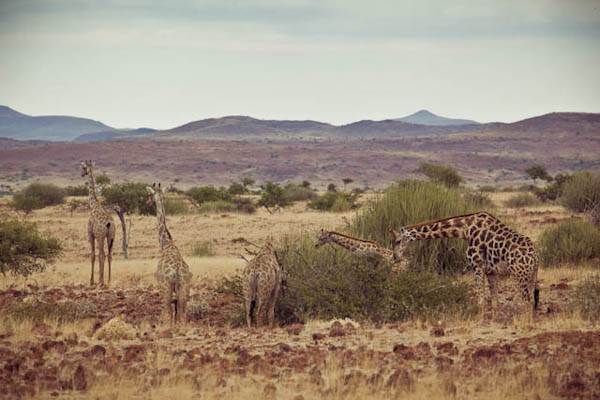


First we needed to observe the tradition and drink a bottle of ginger spirit, to avoid a flat tyre. At the Sesfontein village joint, where we stopped to stock on the lucky-charm drink and  , a regular Monday was at play: people were chatting and liquid-dancing to the blasting jukebox, pool was being played with a golf ball, nickels were being dropped in the poker machine.
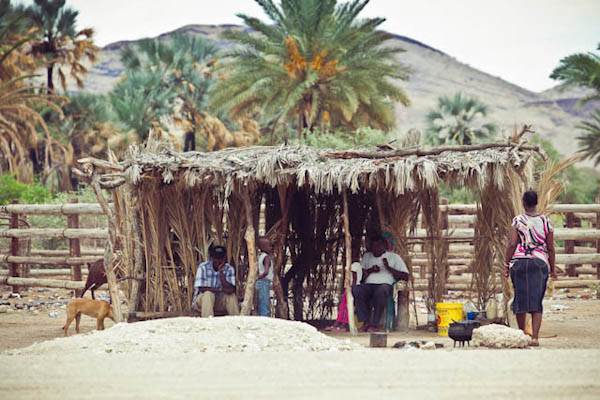
Then we were out of the map. The end of the road was only the beginning of the journey. We were driving across the unpeopled, formless, oldest desert in the world, the pro-Namib. The vacancy, the remoteness, the sheer implausibility of the place was astonishing. Wisps of dry shrubs covered the earth with a scabby pattern of circular, barren patches, like enigmatic landing spots of some past flying saucers. The average diameter of these patches: 5–8 m!



These are the so-called ‘fairy rings’ of Namibia, one of the most enigmatic phenomena in the desert regions of southern Africa. To date, the bioassays conducted in soil samples collected from these sites failed to support any proposed explanation for this patterning (localized radioactivity, termite activity, growth inhibitors released by dead Euphorbia damarana plants etc). But the relative permanence of fairy rings in the pro-Namib desert is believed to be critically linked to the optimal functioning of the ecosystem. The fairy rings may be some sort of adaptive response to extreme arid conditions, facilitating capture, storage and recycling of limited resources.

But this was not the only strange feature of the landscape. Chunky trees rose swollen with water. Crumbling rock scattered. Winds honed lava outcrops. And in this world of the Oz, a lonely telephone, to give a call to the gods.
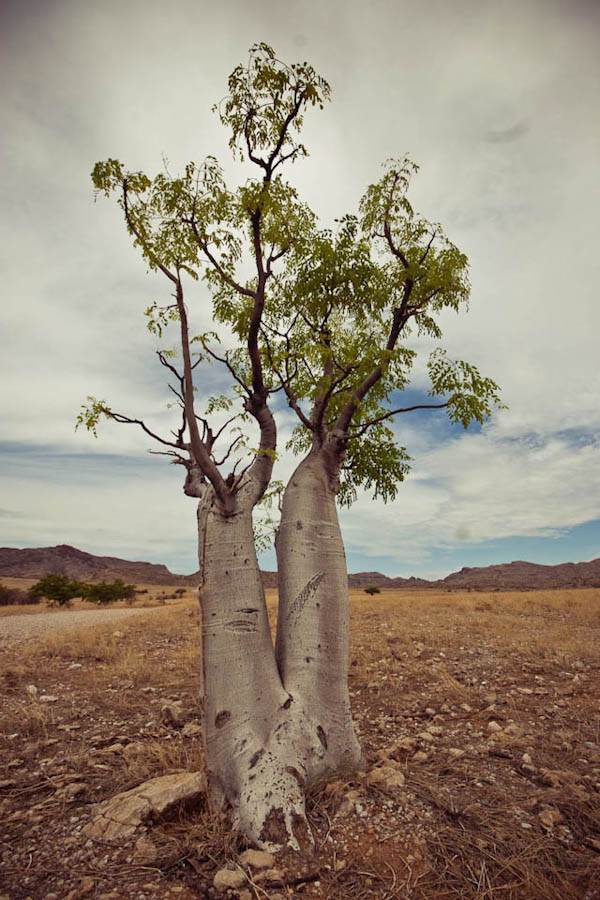


This is not officially designated as a wildlife reserve, national park or protected area. But locals know: the place is teeming with wild desert lions and desert elephants, and many other animals.
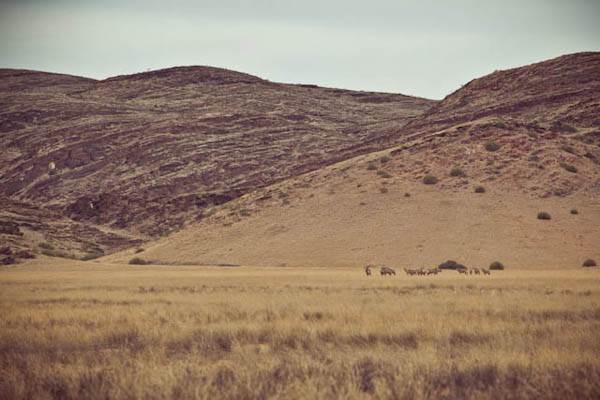
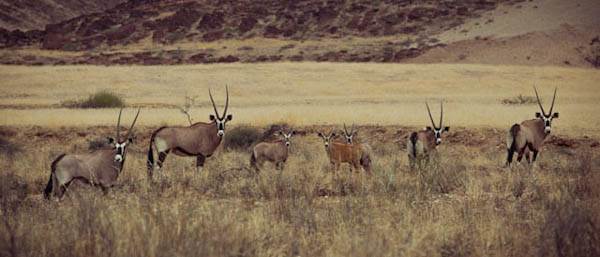
To go deeper into the wild, we had to descend into the dry river bed. The sandy bottom was full of elephant poop and eventually we spotted some foot prints. Everything was so quiet, and we were cruising at almost zero speed, trying to make as little noise as possible. 15 meters high acacia trees shaded the river bed so vast that we were unable to see the banks, our lilliputian vehicle lost, dwarfed, nullified. Then the bull appeared, and suddenly the astonishing scale of the landscape made sense.
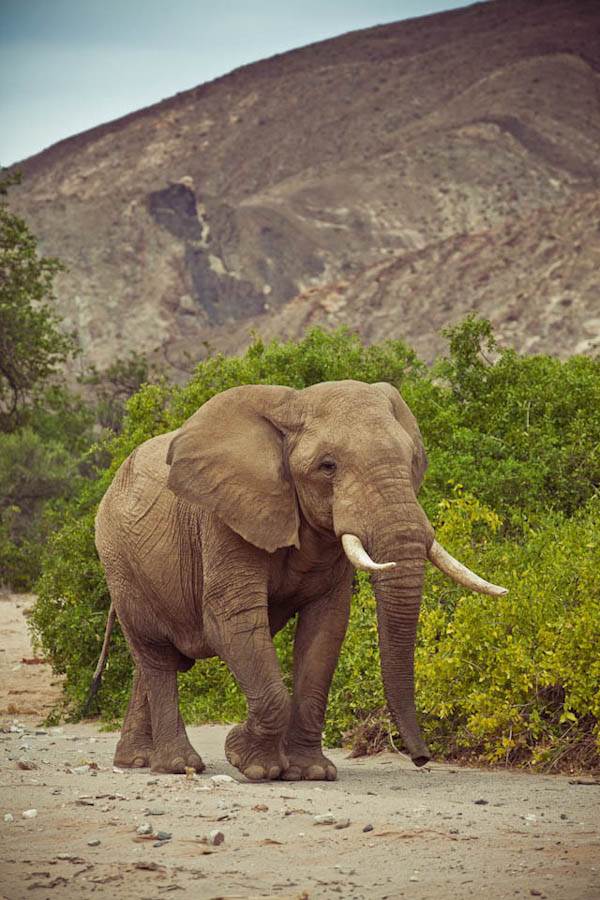
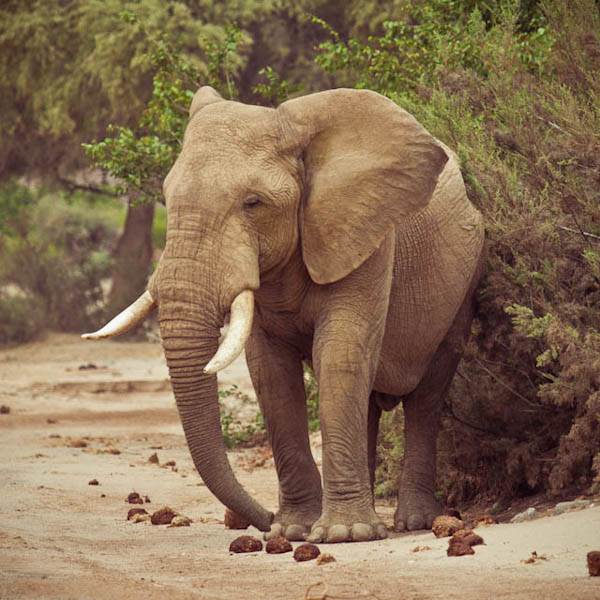

He allowed us to watch, and it was so quiet that we could hear him chewing on bark. Desert elephants don't need to drink every day and their tusks are smaller, due to the scarcity of nutrients in their environment. But this guy was an impressive size and we were hoping to see him again later, as we would set up camp downstream, into the river bed. Looking for a spot to pitch our tents we met more surreal creatures: slender giraffes, Oryx, ostriches, guinea fowls…

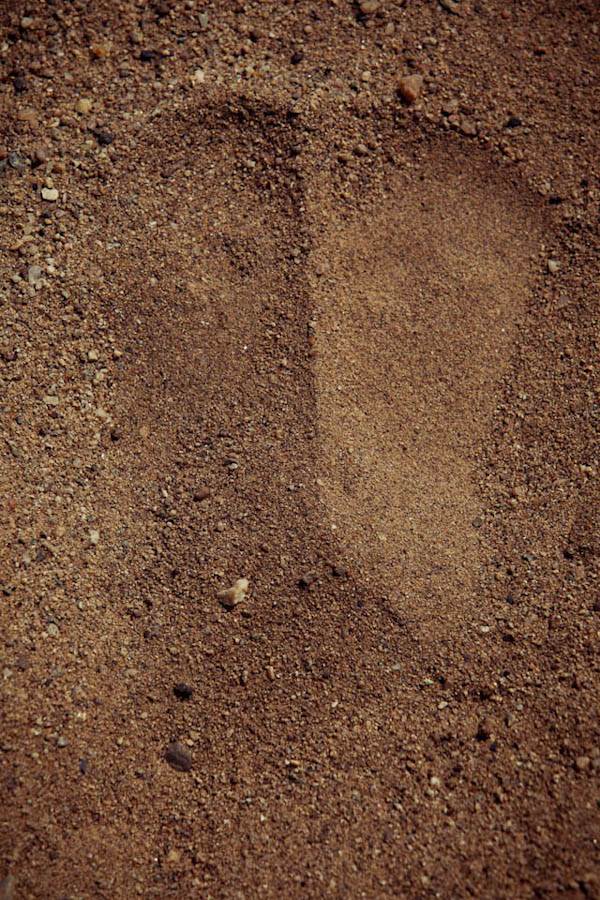
Giraffe footprint: guess the walking direction!
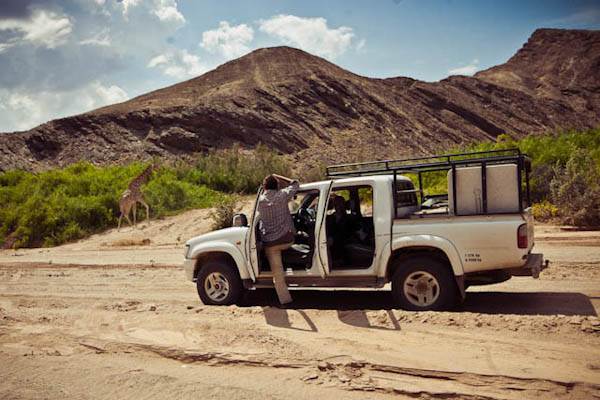
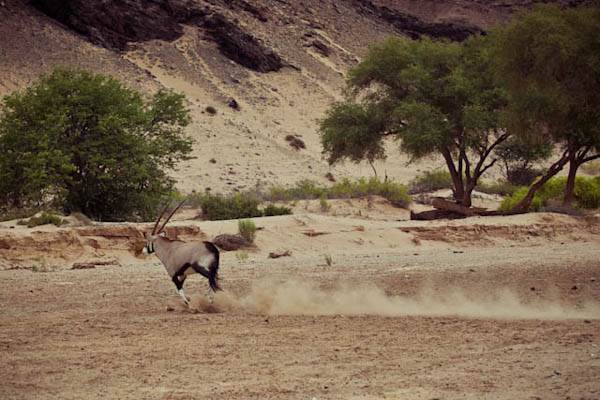

We enjoyed more red wine with our braai, then it was time to have some rest. Lying under our mosquito nets, we saw everything, we heard everything. The sky was white with stars, jackals and birds were calling their mates, the river was silent, smelling of heat and sand. It was one of the most relaxing places we ever slept in and we woke up when it was still dark, when the bull from earlier passed by our camp, snacking on more bark. We were humbled by the respect wild animals had for us, keeping the right distance from our camp, allowing us in their home for one surreal night. And we don't think we were under influence there, it is that simple. We live together, we share, we survive.
Of course, the sunrise was just as psychedelic, a white haze filling up the valley, deserts flower delicately scenting the dry, fresh air.

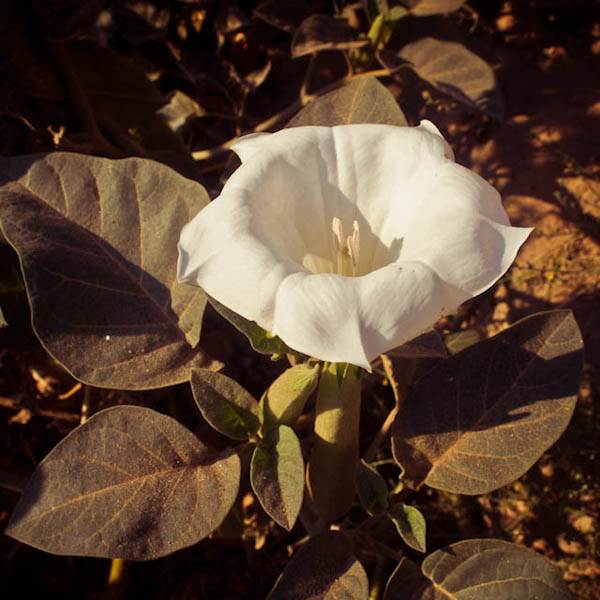
Tea was brewed, sandwiches were fixed, tents were packed, careful to remove all traces of our ephemeral campsite. The sun was obliterating smell and vision, air too hot already. Jackals, antelopes, ostriches, baboons were going about their business.
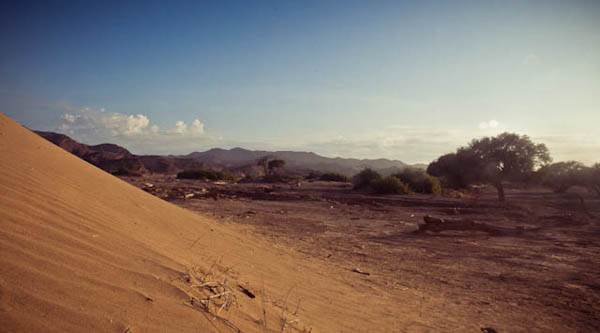
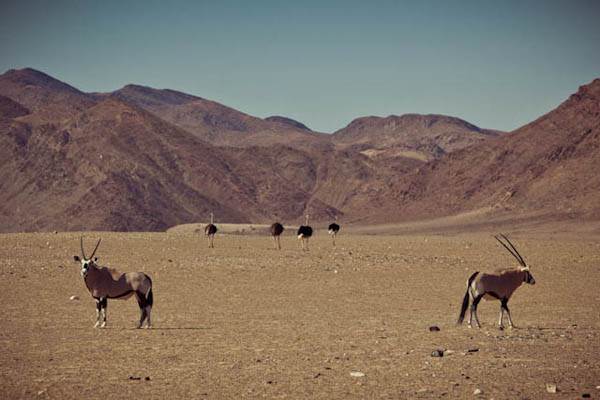

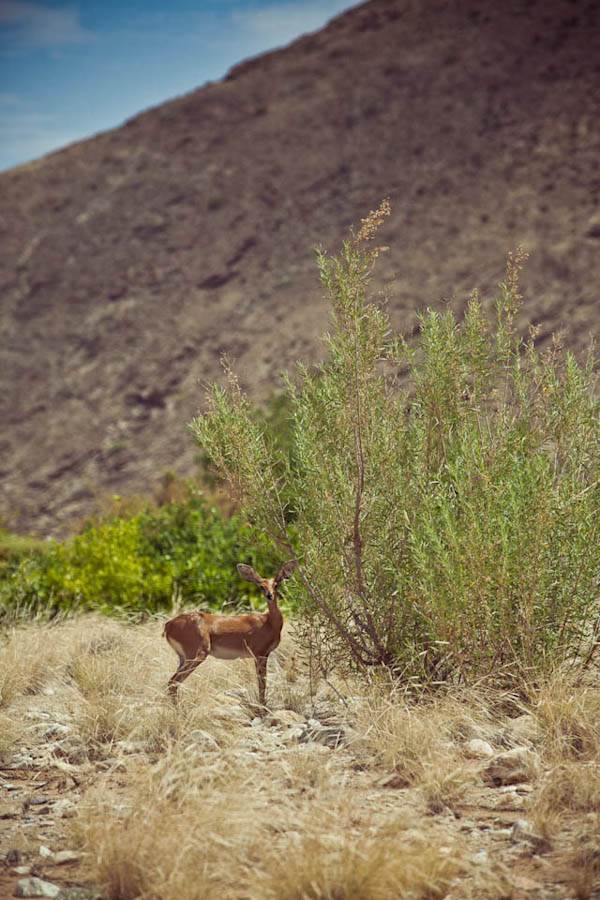
Going back we took a different way through the river bed, wondering at the huge exposed roots of the trees, unsuccessfully trying to picture the river flooded with water. Some fresh elephant poop and recent footprints appeared: two babies with some adults maybe. Incredulously, we followed them along, and here they were, a bunch of elephant mammas with the little ones, taking a lovely sand bath!

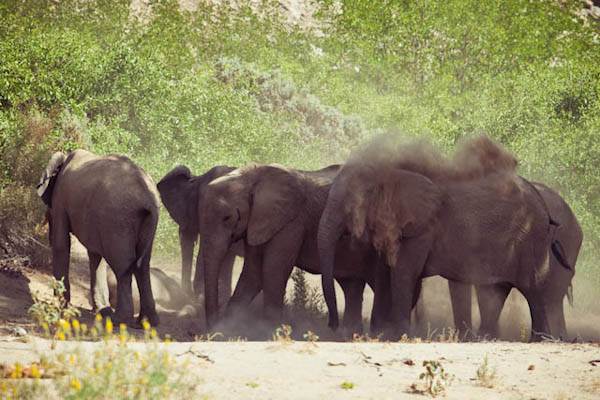

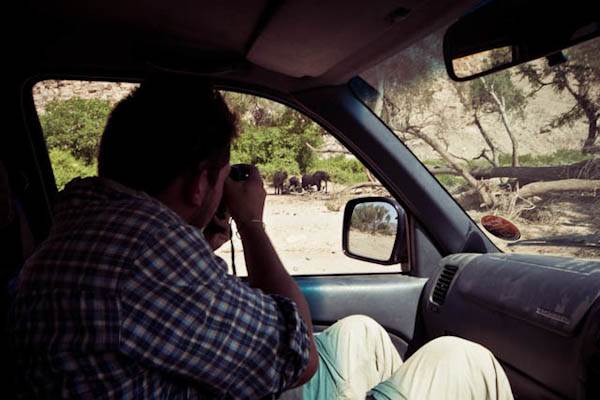

With all the antelopes swarming the land, that had to be a predator's heaven. Soon we met the proof: fresh lion foot prints, lots of them, cubs with adults. We tracked them for a while, thrilled, but of course the lions remained elusive, minding their own business in the perfectly matching colors of the veld.

Cub foot print

Adult lion paw next to Ana's hand
As we drove on, the sandy bottom started oozing water, brittle desert plants giving way to a marshy field of tall grass, where another bull was enjoying his beauty mud bath.
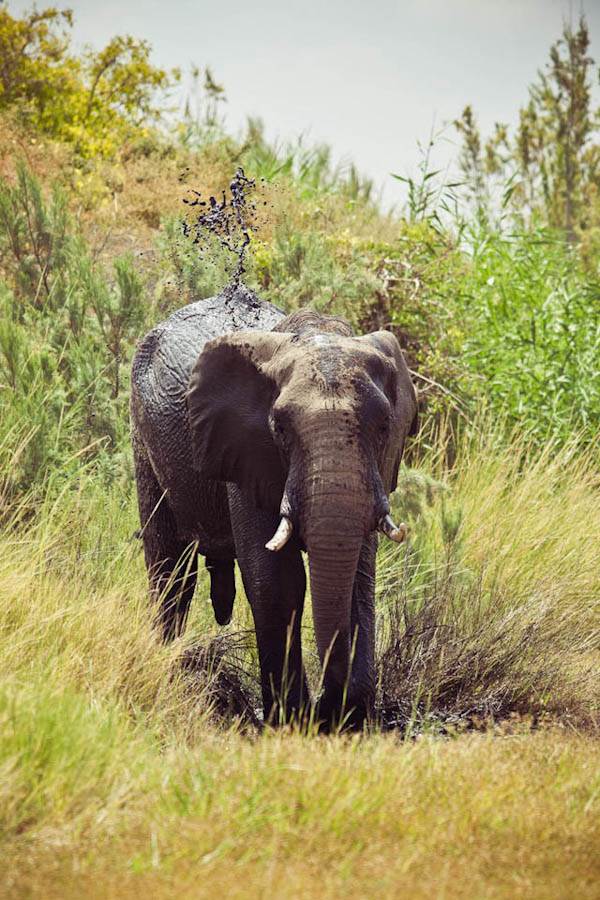

Exiting the river bed back into the veld, our party of three was still as boozed as the day before, but more quiet, nostalgic, really. Our awesome escape was coming to a close.


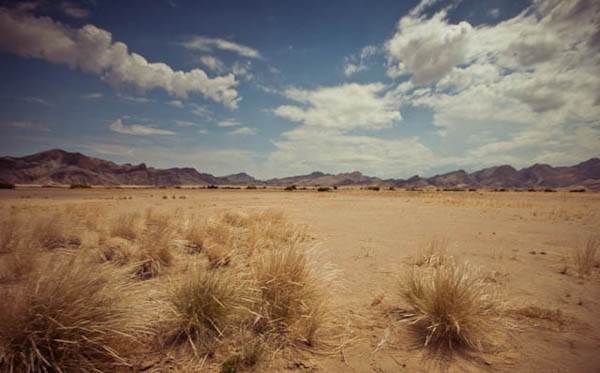
On our way back we stopped again for the mandatory ginger liquor, but some  s later, 80 kilometers before Kamanjab, we remembered one must not drink and drive. So we parked at the Grootberg Pass Lodge, which belongs to a friend of Vitals, to collect our composure with the aid of several double gin and tonic. The lodge was built in an environmentally friendly way in a pristine conservancy, on the rim of the ancient Gondwana split, among 132 million years old volcanic mountains. But the night was young, the view was stunning, and our generous hosts proposed dinner and bungalows perching on the edge of the canyon. So we stayed. Tempering the pampering with two bottles of red.

In our so-called Western world, we live far from the wild. We work hard to maintain the boundaries. Some even believe that we have become a species disconnected from the natural mechanisms of life. But in a place like this, one cannot help but wonder, “how could I possibly want more, something else?” Just open the eye into the world, and see.

|

23 Mar 2012
|
|
Registered Users
Veteran HUBBer
|
|
Join Date: Mar 2010
Location: Bucharest, Romania
Posts: 117
|
|
|
Somewhere Under the Rainbow
Namibia 01-11 martie/ 1st-11th of March

Windhoek. We needed to leave asap the only place in the world where the names of Nelson Mandela and Robert Mugabe meet at the same crossroads. After all, we had come only to collect a visa (done!), and to locate a friendly garage and supplier for spares to do some maintenance work on our Yamaha (postponed). The only shopping we could afford was a set of Heidenau K60 Scout. Looking quite solid, hopefully these are the last we shave on African roads. One front caliper rubber is broken, so I cleaned the caliper boots, something that needs to be done more regularly from now on. It was also imperative to change the oil, and the only option at that time was the Yamaha dealership. Huge prices there, all I'll say is that since I put on the Bel Ray 20W50, the clutch started to slip.


Windhoek, where Mugabe + Mandela = L.O.V.E.
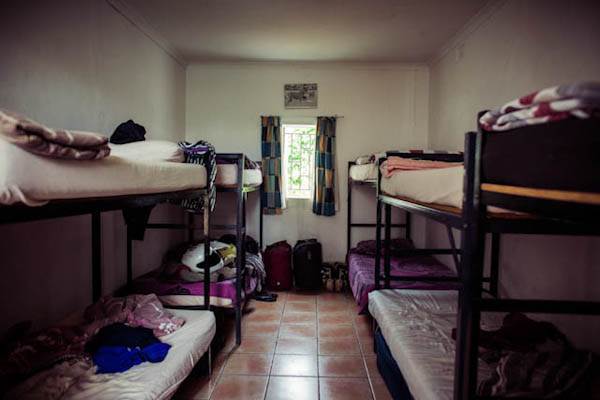
The only somewhat affordable accommodation in Windhoek was this backpackers joint. We paid two beds, but of course we cuddled in one, happy that at least we had a decent wifi connection.
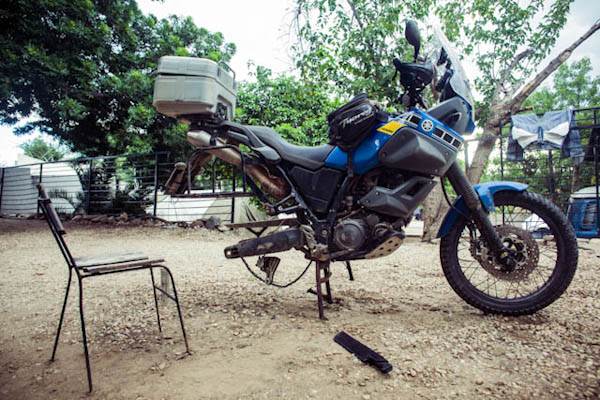
I am having some work done in the hostel yard.

TKC 80, done
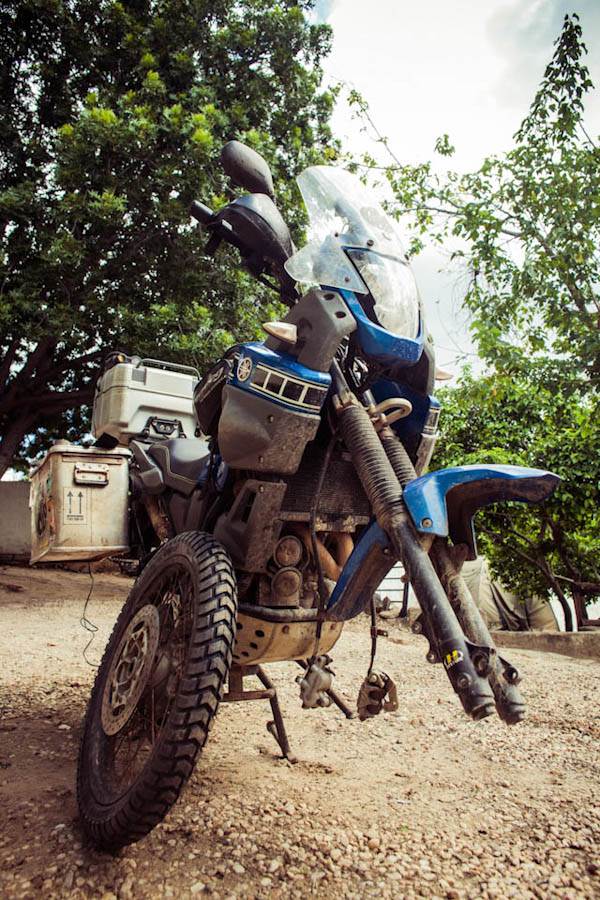
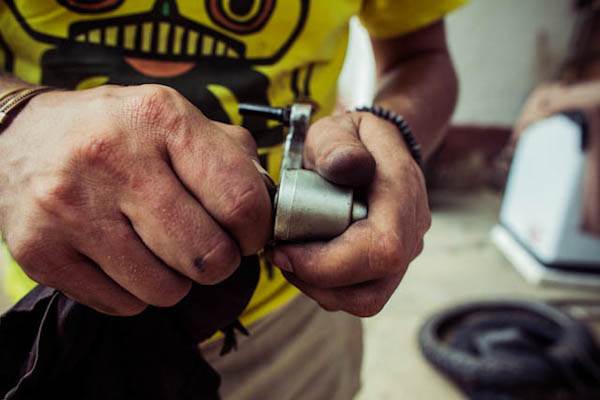
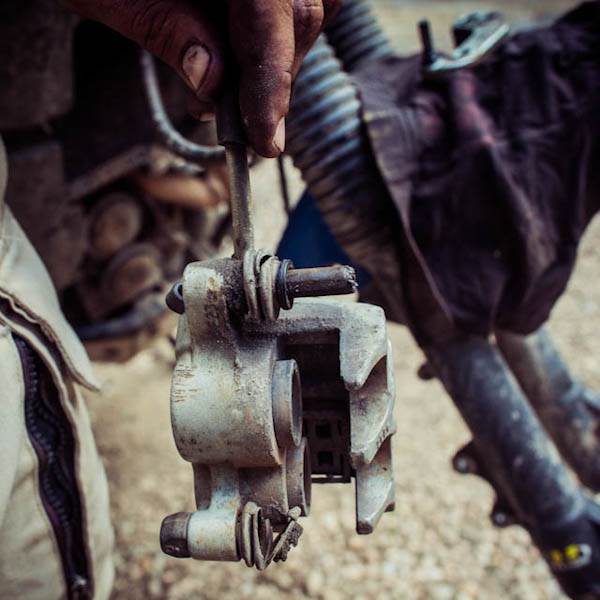
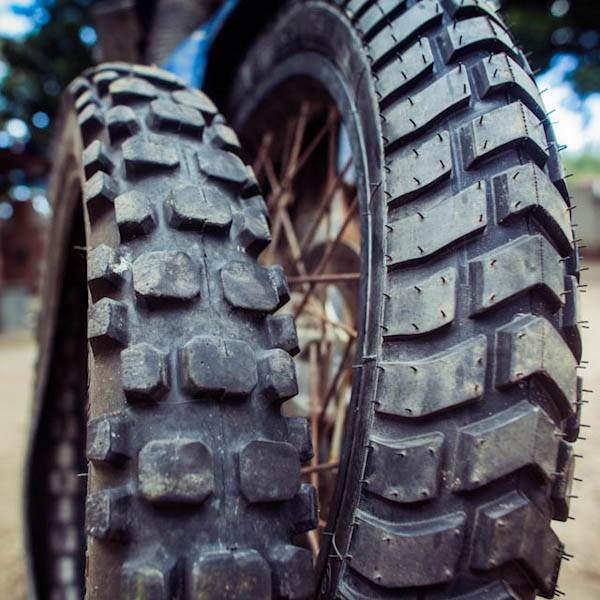
We had had a pretty intense week: Ana's b-day party, not in Cape Town, as planned, but among lovely people. We had also encountered 3 German dudes and their dog, determined to bicycle from Cape Town to Berlin in 4 months. Ahead of us, the rainy season was cooling off, epic cloudscapes still threatening with thunder, but already too week to spread their rainbows downy to the earth. Dry season was nearing, and we were loving the news.
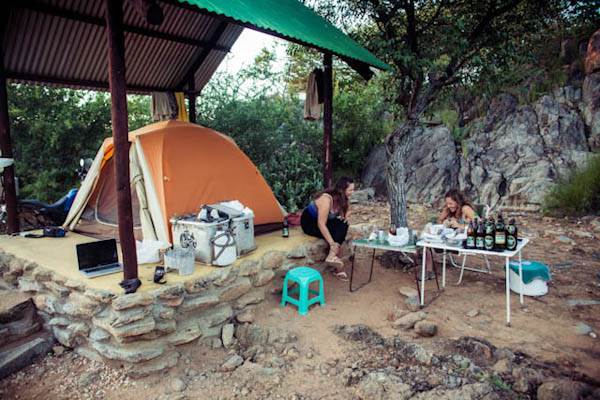
Beer, wine, braai and two joyful girls (Melissa and Ana)
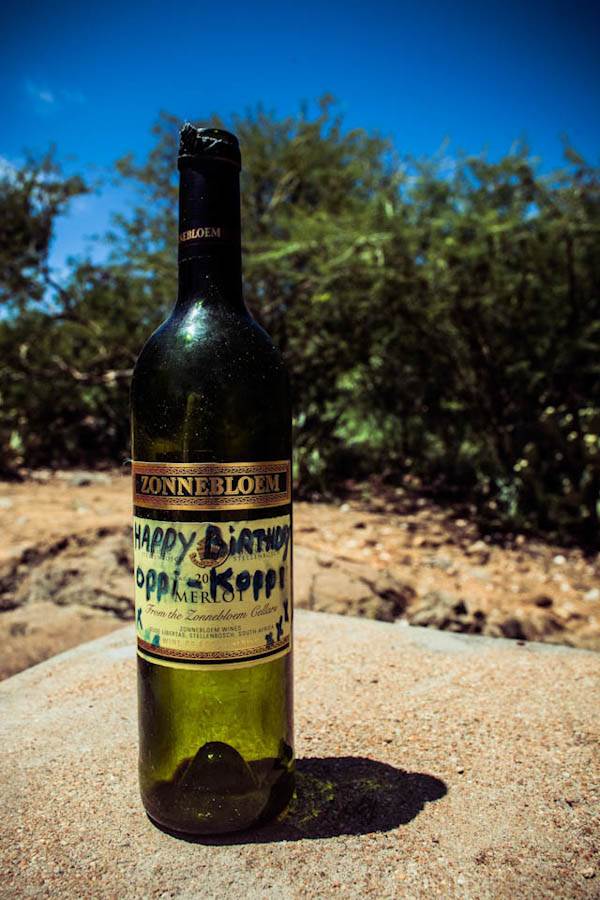
South African Merlot

Meeting our fellow nomads, Daniel 1, Daniel 2 and Pirco
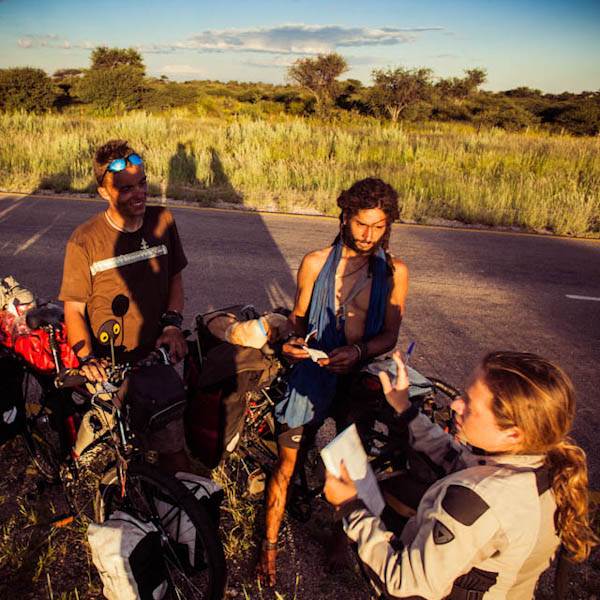
Important health and visa information was exchanged…

Clouds stretched a fading rainbow above…

We pitched out nomad home under the stars and at 9 p.m. a full moon cast shadows over the veld

A cheeky sun followed up the next morning
The little used road that links Windhoek to the southern part of Namib Naukluft was supposedly beautiful, but the ride exceeded our expectations. The gravel swirled up across a breathtaking succession of passes, hairpins cut through golden veld punctuated by wind-powered water pumps, travelled by families of thick furred baboons. Wild flowers were putting kuler to shame and quartz filtered the last rays of the day.

I spotted a breach in this alpine bungee, in the monotonous horizontal of wire fencing, a chance, an opportunity. So I took it, and found another stunning wild camp.
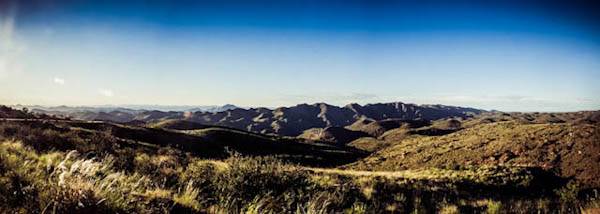

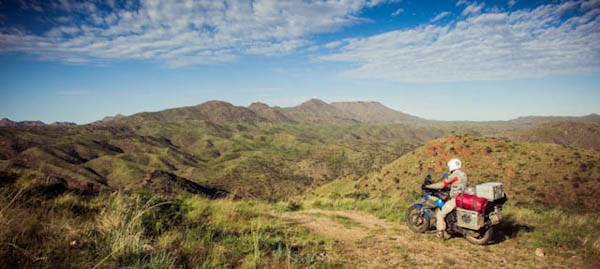



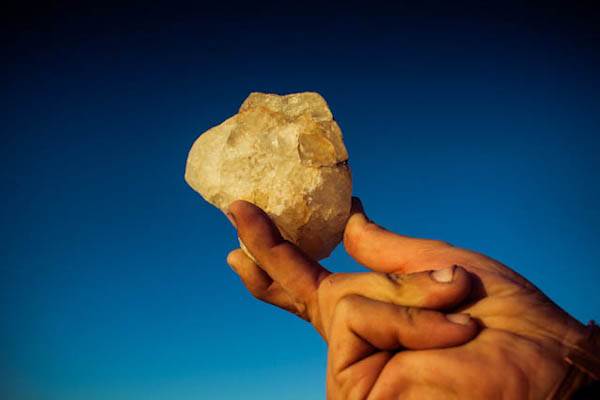
Translucent boulders scattered
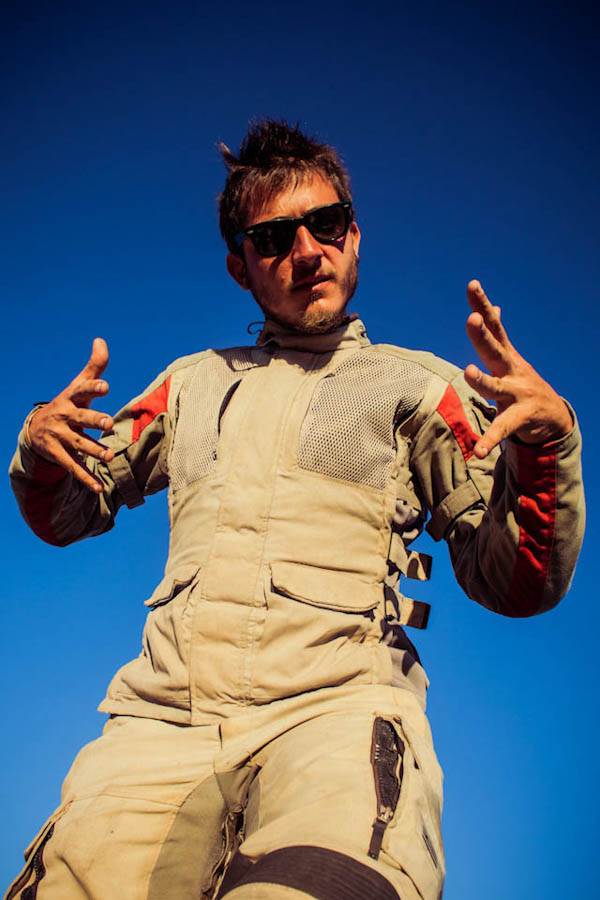
Months of wild camping paid off: we had become pretty good at smelling a good spot

Another sunset…

Another moonrise!
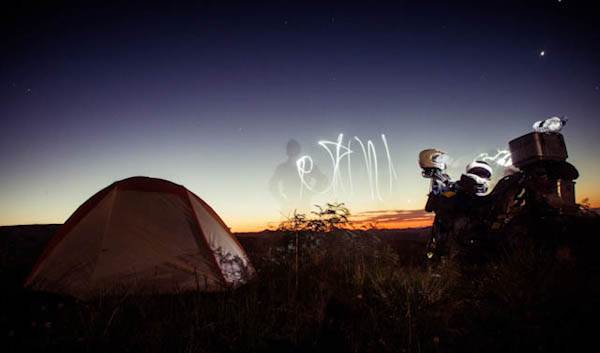
We gathered near a fire, then the strong cold wind forced us inside. The spartan morning was fast, wind still blowing untamed, but luckily the air got hotter as we descent down to the desert. Our first stop was at the Tropic of Capricorn signpost. We were preparing to take the compulsory photo, when a guy on a BMW F 650 Dakar passed by. Minutes later Reiner, original from Cape Town and just returning from a 3 week solo ride through the region, came back. It was the beginning of a fun 3 and a half day marathon to the Mother Town; sometimes we rode together, sometimes we separated, only to meet again for a pie in Solitaire, a  in Sesriem, or a chat about how we could not afford the ridiculous price for a safari in the famous Dead Vlei (another park forbidden to motorbikes). The gravel roads were excellent, wide and empty, only vast herds of hundreds of zebras, springboks, oryx, giraffes and ostriches shared them with us.
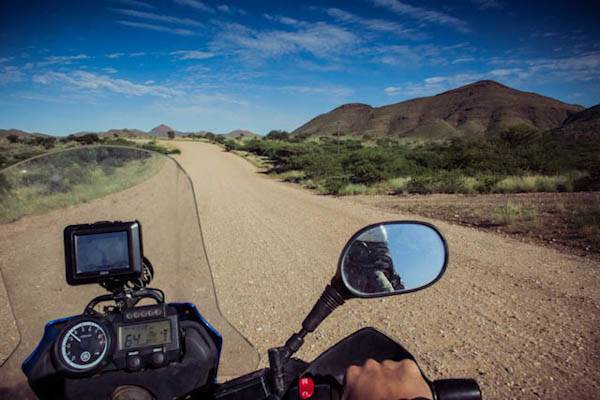
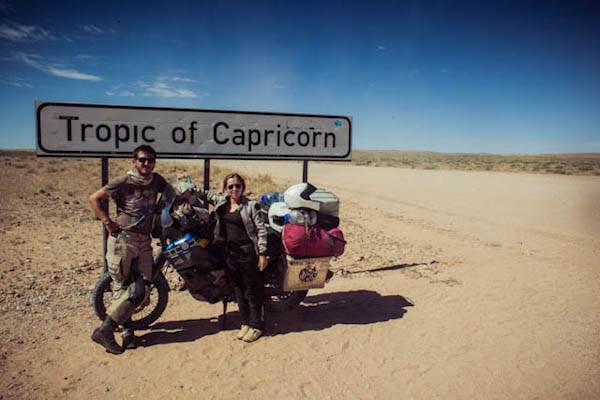
Far from the Ecuator, memories of Sahara also lingered
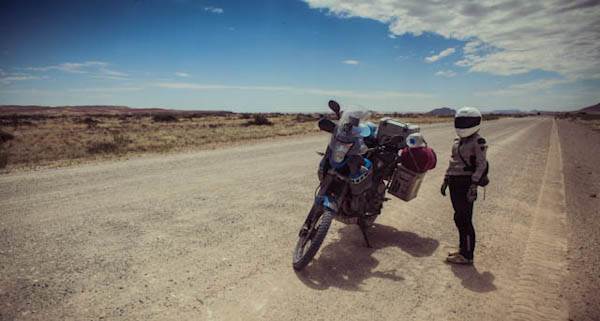
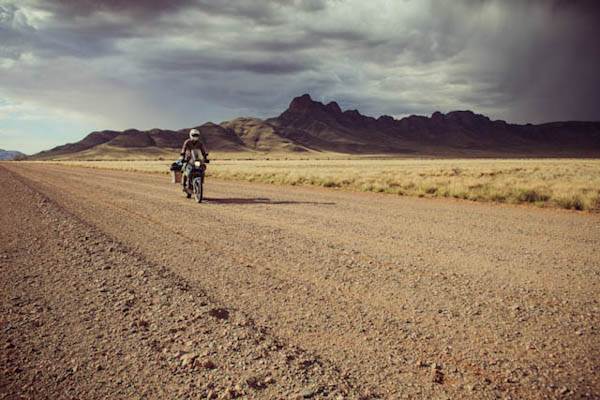
Riders understand each other: the gravel was fair, the sky deep, the rain threatened to come. But we rev our bikes into the black eye of the storm, confident that we would find over the next horizon a quiet place to camp.


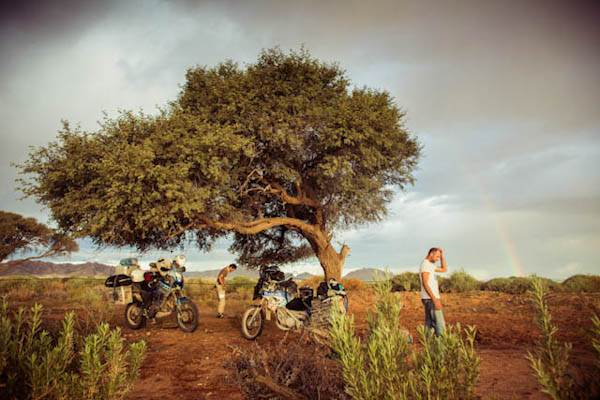




The smell of dry desert lingered, but the real drama was unfolding above; we needed to stop before the last 590 kilometers to the canyon and we knew had found the right spot, under yet another epic rainbow.
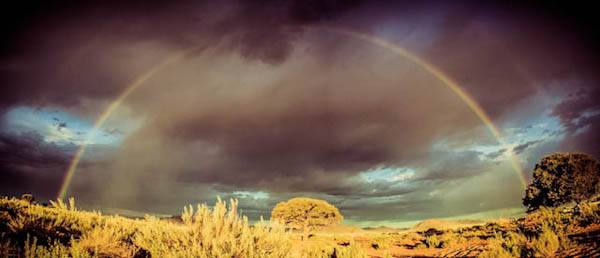
After the fabulous show of the sunset, the morning felt calm and clear: we rode along the scarlet dunes of the desert, born thousands of miles away, in the Drakensberg mountains, from where the Orange River sweeps ochre sand into the cold Benguela current. The massive dunes - one of the most extreme and inhospitable ecosystems in the world - are stingily covered with detritus. This fragile layer of dry and dead plant and animal debris is the basis of food web in the desert. After a good night of fog, it can contain up to 60% of its weight in water, and as low as 2-4% during the day.
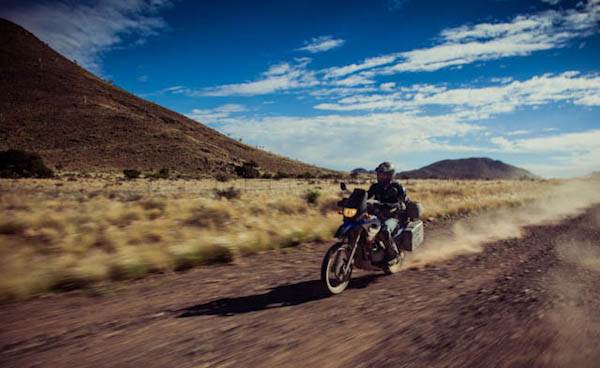
Reiner


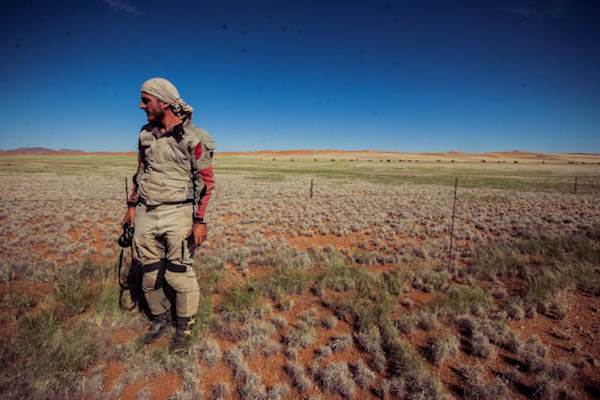
A few hours of non-stop riding later we had arrived at the last turn towards our last Namibian target. Which we celebrated with the last couple of  s with Reiner.
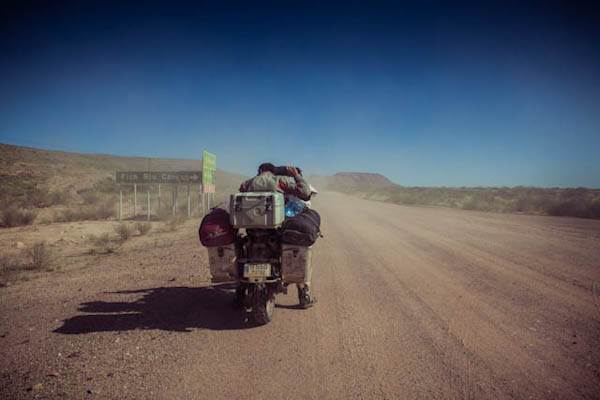


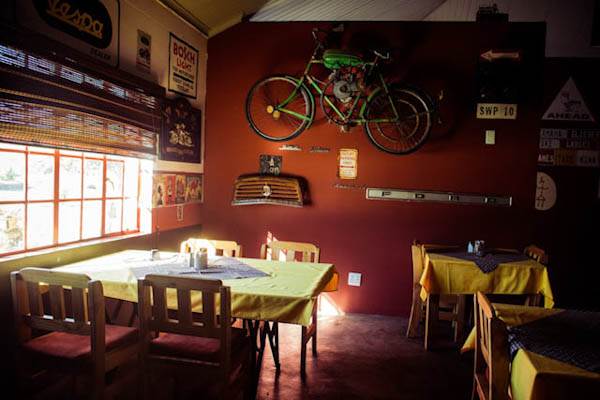
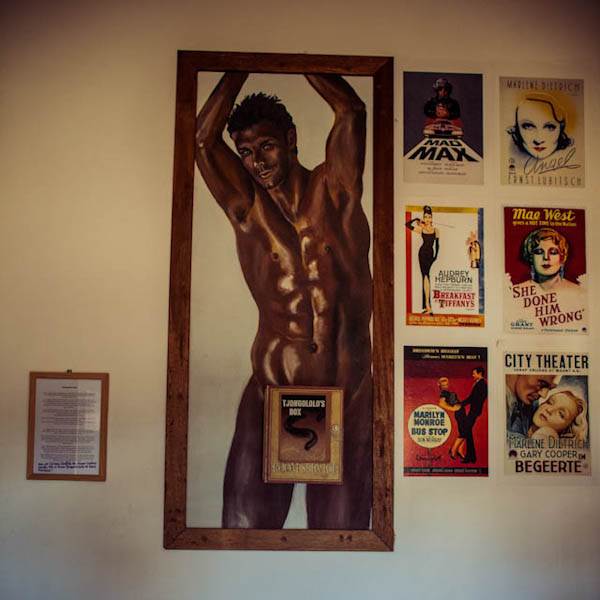
Crisp Windhoek Lager, another tank filled and another stretch of gravel to the second largest canyon in the world and the largest in Africa. Fish River Canyon opened below into a gigantic dolomite ravine, some 160 km long, up to 27 km wide and 550 metres deep. The river, 650 million years old, cuts intermittently into the dry, stony plateau, sparsely covered with drought-resistant plants. But it was the end of summer, so only a few long narrow pools still lingered.
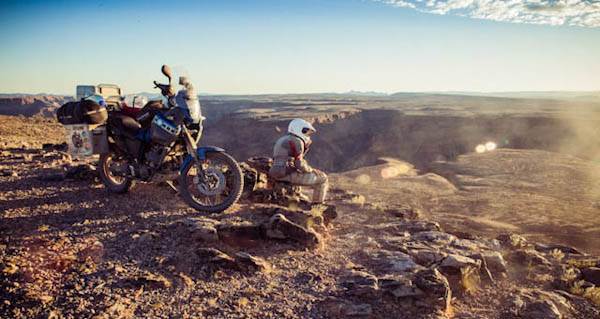

We spend a bit too much time gazing into the canyon, witting for the sun to set, snacking on a brief dinner. Setting off in the already deep darkness, we knew it was too late to reach our meeting point with Reiner. Riding at low visibility avoiding the wildlife proved quite demanding, so soon after we could exit the protected area we stopped to set camp.
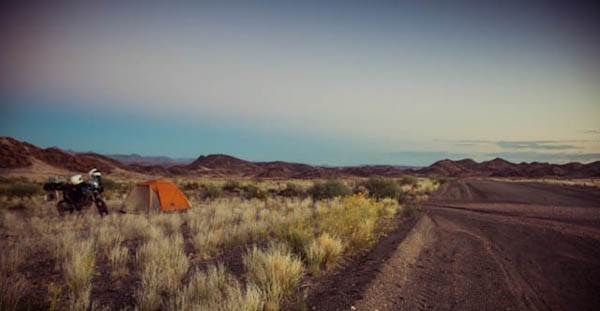
A lonely, romantic place, only the jackals kept calling into the night
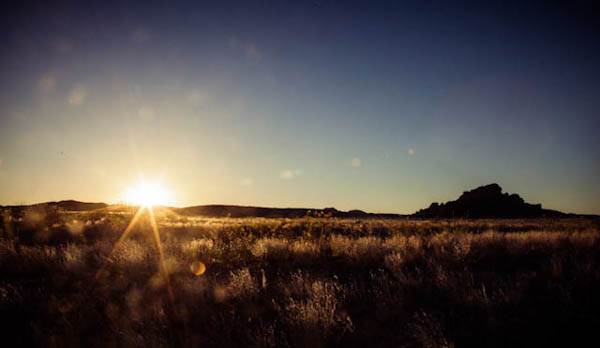
The last sunrise in Namibia. The next one would happen on South African territory, where we were about to proudly set a record, driving the first motorbike from Bucharest to Cape Town.
Kilometer by kilometer the sheer rock faded away into an infinite moonscape. It was the end of the world. Blue, flat, an artificial-looking sky floated upon an even stranger papier-mâché of sand and brittle gravel. Was that the right way? How could that surreal nothingness become something again?


But suddenly we saw the tarmac snake, a cruel, perfect cut across the desert, leading straight to one of the most important borders, the one that separates black, vernacular Africa from the African America.

We had butterflies in our stomach: we would soon cross, after nine months as intense as nine lives, into South Africa. After the fundamental Mauritania - Mali, Benin - Nigeria and DRC Zambia frontiers, we ventured again, full throttle, into the unknown.
|

23 Mar 2012
|
|
Registered Users
Veteran HUBBer
|
|
Join Date: Mar 2010
Location: Bucharest, Romania
Posts: 117
|
|
|
Bucharest to Cape Town
We're here! A marathon: 84 hours, 1900 kilometers, so that finally a couple of Romanian nomads arrive by bike in South Africa. The yellow moon, the original moon, shone ghostly upon the town and upon two oceans. We're halfway, or maybe just at the beginning, of an incredible adventure that's been going for over nine months, that we've been dreaming about for a lifetime.

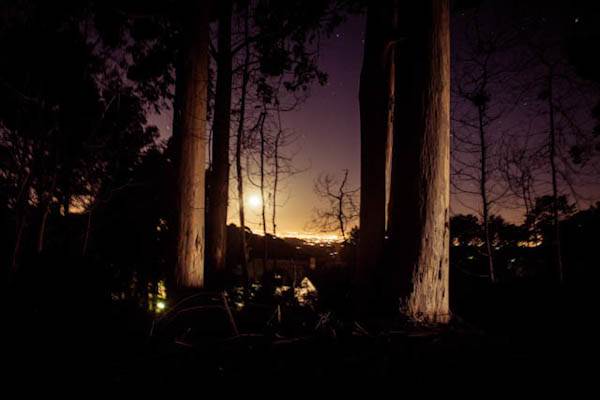
|

30 Mar 2012
|
|
Registered Users
Veteran HUBBer
|
|
Join Date: Mar 2010
Location: Bucharest, Romania
Posts: 117
|
|
|
Flash Forward
Stay tuned for the continuation of Into The World
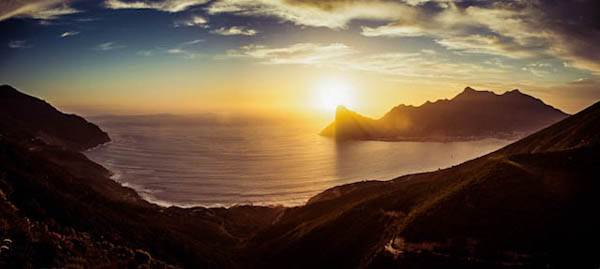

|

12 Apr 2012
|
|
Registered Users
Veteran HUBBer
|
|
Join Date: Mar 2010
Location: Bucharest, Romania
Posts: 117
|
|
|
The End of The Endless Summer
Cape Town 11- 21/03

The last border of the first part of our Africa tour proved to be the easiest. West Africa was now behind us, next there were the South African subcontinent and the presumable easier East Africa. More tarmac and more fences ahead, less freedom, no more random wild camping, but more untapped wilderness and many unknowns. After the sharp looking immigration officer ruined yet another page of Ana's beaten passport, we were in. No taxes, no bullshit. The only direction we were given was to use the "white people exit".
It was the first bell to ring. Next, we needed to retire some money, fill up the tank and replenish our food supplies. That was going to be a long day: Reiner was already far ahead of us, but his example had inspired us to do the same and ride all the way to Cape Town no matter what. Over 800 kilometers that is, but 100% exceptionally good tarmac. Our pit stop happened to be in Springbok. On a Sunday, the sleepy little town looked like a life-size papier-mâché model. All crisp edges, bright colors, wind sweeping brittle grass on empty streets in the milky haze of early morning. At any turn we would expect to see people swarming out of this Trojan horse. But we were alone. We rode about the ghostly assembly of houses and supermarkets Everything looked brand new, like an experimental settlement implanted in the bony mountain. It soon became evident that we were subject to a different kind of illusion, one more subtle than a deus-ex-machina. The illusion of simple, perfect life in a provincial town.
Springbok was our second warning. Corporate power and consumerism were about to assume dominance to our everyday world. But for the moment, we couldn't be bothered with that. Out of Springbok we were giving our Tenere a beating on the thrilling roads that wind through Namaqualand.
After the adrenaline-pumping race, the road became smoother and shy. Namaqualand is a top destination for flower watching. In full bloom, this daisy paradise must be mesmerizing. As we arrived at summer's end, the flowers had shed their bright petals months ago. The spring glory was gone. The curvy field was blanketed in dry grasses. And the sun shone surgically precise over this charming geometry.
The ride started in high pitch, thrusting across a hefty chink of rock, a solitary giant in a surreal, empty landscape. The air was filled with dense colors that blurred our perspective.
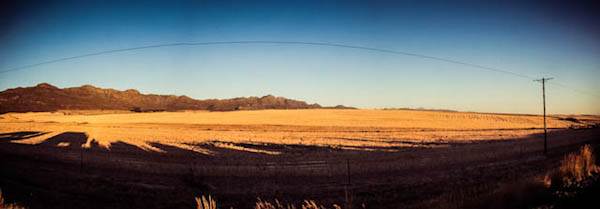
At a red light, we received the first proof of the proverbial Capetonian hospitality. Charl and Carla, a young couple waiting alongside in their car curiously inquired about the language we were speaking. Our story appeared to interest them, and at the next stop we met again. This time we exchanged phone numbers and the promise to hang out or braai together in the upcoming days. Hours later we were feeling exhausted by the long drive, having to make seldom stops for refreshment. We had eaten breakfast in a fast food joint in Springbok and lunch from our supplies in a gas station somewhere. All we had to do is hang on and keep pushing. In Citrusdaal we received a second offer to overnight, from a local family who happened to spot us while filling up with petrol at the Total. We kindly declined, but what a good feeling that gave us! We had arrived in South Africa quite battered and we planned to speed up our pace. Already the journey to there took us 3 months more than the original 6 we had allowed. And our financial resources were ever dwindling. So the idea was to exit South Africa in less than 3 weeks. But the first encounters invited for a more lengthy stay.
We arrived at the outskirts of suburban Cape Town by night. But this was a whole different ball game than the other 19 countries we had visited so far. Fancy saloon-shiny cars were speeding by, navigating a well appointed infrastructure. There were persistent, well designed directions everywhere and the highway was flushed with lights. The city was a patch of twinkles, beyond which we guessed in the darkness that filled the horizon the Atlantic ocean. The full moon was up. We had finished the first half of our African adventure. The mud, sweat and tears in the Congo were now yesterday's news.
The following morning, at 6.30 a.m., we woke up to start packing, only to find ourselves surrounded by walls. We had machines to cook breakfast and brew tea for us and hot water was again at the press of a button. We were staying for the next week in Hout Bay, with Iulia and her capetonian boyfriend Zak. Iulia is a Romanian girl who has come to live in Cape Town 4 months ago and who discovered our blog and had the generosity and inspiration of inviting us over. In the coming days we would discover that we share many quirky habits and a common passion for food.

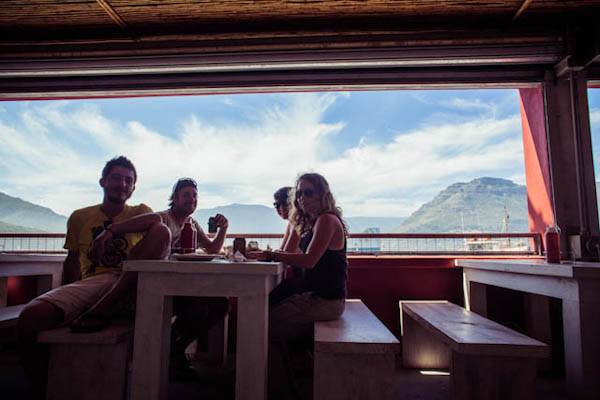
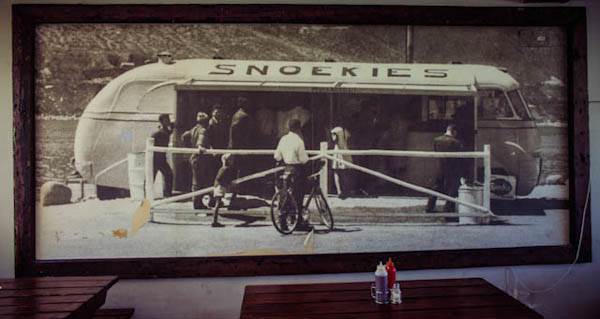
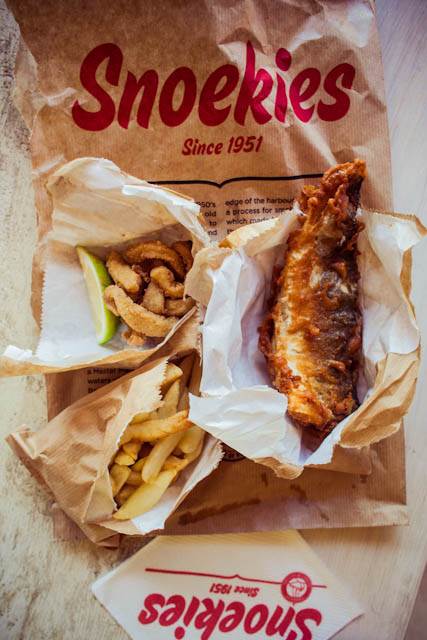
Fish and chips at a Capetonian legend
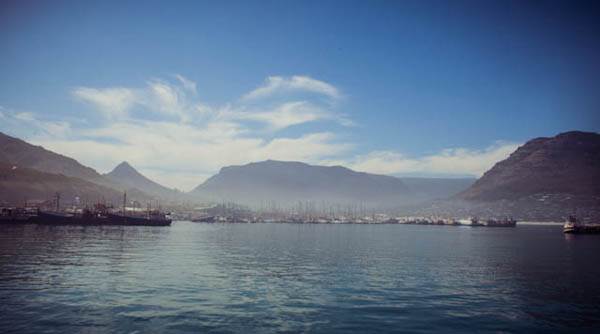
Hout Bay

No comment
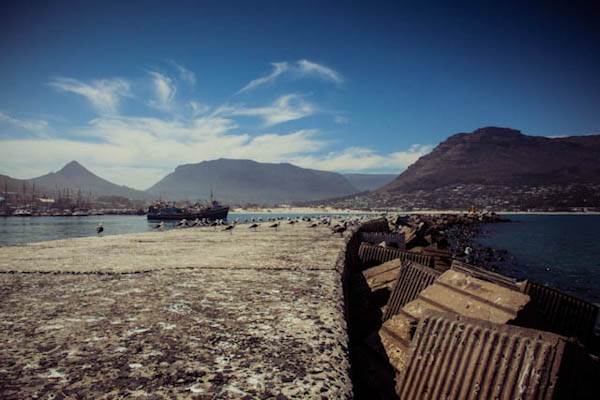

Seals love basking in the sun on these shores



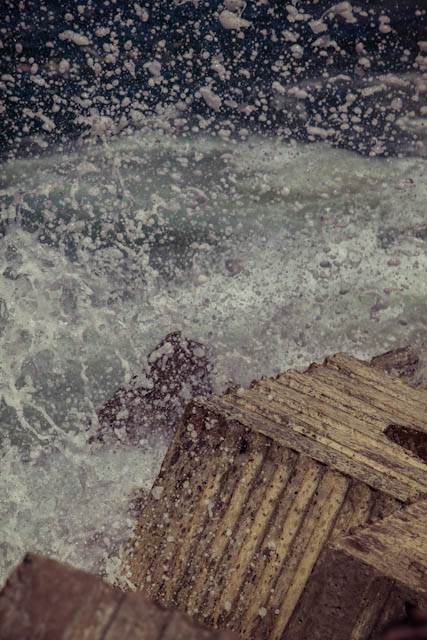
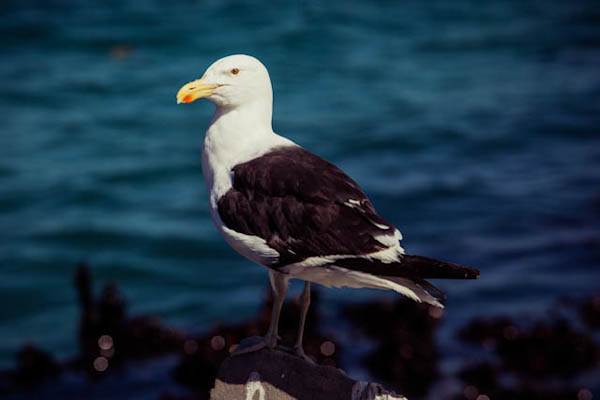
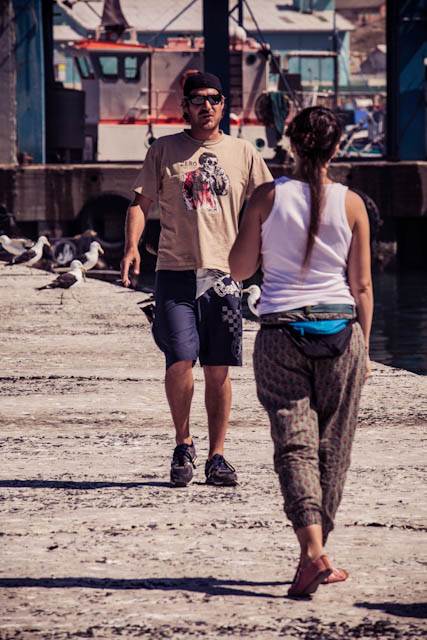
The sheer scale of Cape Town started to gradually down on us as the days passed. We had arrived in the night, and all we could make of it was the fragrant smell of pine trees to Kirstenbosch and the scintillating downtown under the huge full moon. Hout Bay, our home for the week, is one of the pouchiest, most chilled areas of the town: low rise residential developments, but mostly sunny villas tucked along a gentle bay. People walk barefoot even to the shopping mall and their dogs roam the beaches sometimes unaccompanied, accustomed to enjoy the odd pat and cuddle from the tourists or any animal lover really. We were lured by this peace and epicurean, holiday-village life. The drive to town was even more intoxicating. The perfectly smooth tarmac was wrapped in heart-pumping curves: on one side the crisp mountain was splitting clouds, on the other the cold surf pounded white sandy beaches. Loud sun, fresh air, we felt high with enjoyment.


The first thing that jolted us back into the reality of a modern metropolis was the traffic: we were feeling more at risk in this dandiest city of the continent than in the deepest bush of the Congo.
The city has a population comparable to Bucharest, but it is scattered on a huge area. Most locals reside in single-family homes in the suburbs, the business district and the industrial port are located north of Lion's Head, in Table Bay. To the south there are several national parks with exhilarating hikes and the iconic Table Mountain, covered in a layer of intricately beautiful fynboss. The swankiest properties and the trendiest al-frescos line the Atlantic Western coast, especially in Camp's Bay and Clifton, but also in Hout Bay and Seapoint. To regulate traffic both in DT and in the residential neighborhoods, Cape Town has employed an original solution: STOP signs instead of red lights, and we must vouch that it's one that works.
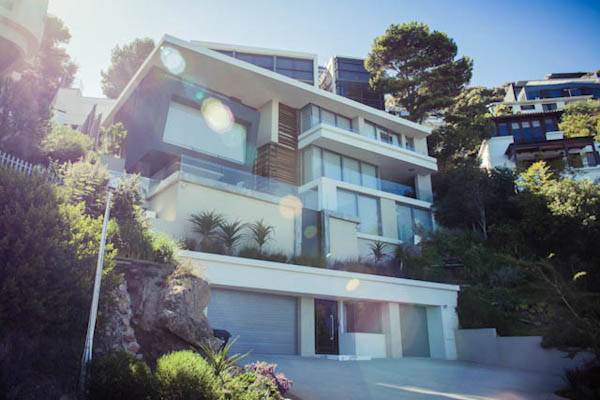
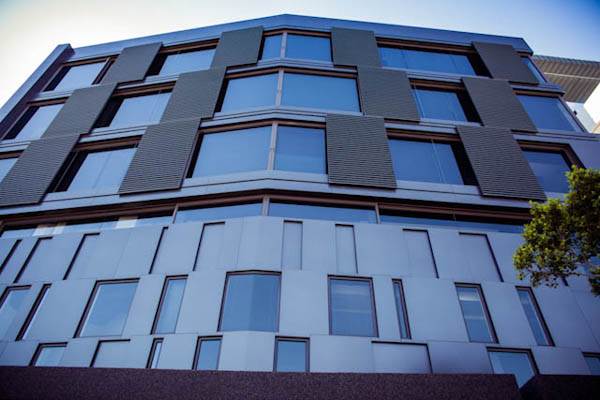

We had lots of business to cater for: passport pages running out and a bike in need of spare parts. We payed a visit to the Romanina Consulate and the welcome was beyond any expectations. The Consul, Mr. Silviu Rogobete, made substantial efforts to offer us the best solution to be able to continue our tour of Africa, while his wife kindly entertained us with cake and quick bites. We may not have many diplomatic missions in Africa, but the ones we visited are top notch. Thank you, Silviu!

Thanks to a tip from Charl, a fellow Capetonian advrider, we arrived at Trac Mac, a friendly and well appointed service and fitting centre. Remember our enigmatic clutch slip that has been bugging us since Windhoek. Well, the synthetic Bel Ray 20W50 was the culprit (thanks to the questionable customer service of Yamaha Windhoeak): I switched back to Motul 5100 10W40 and the clutch works. After a quick assessment we also concluded that unfortunately the chain we fitted in Lubumbashi (DRC) must be changed, after only 6000 km: already 2 (two!) security clips had fallen off and again there was a lot of wear around the connection link was damaged. This time I went for a riveted connection link with a DID X-Ring. Time to change sprockets (after only 10k, because I had to fit them with an old chain in Matadi and because most of this mileage was off road) and brake pads also.
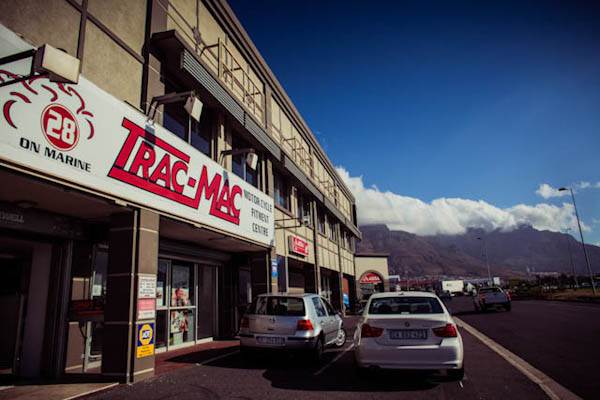


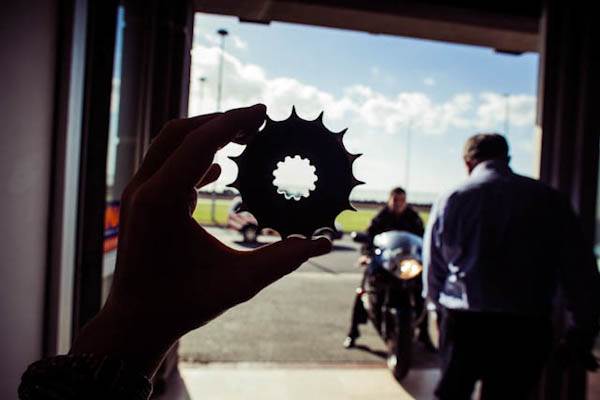
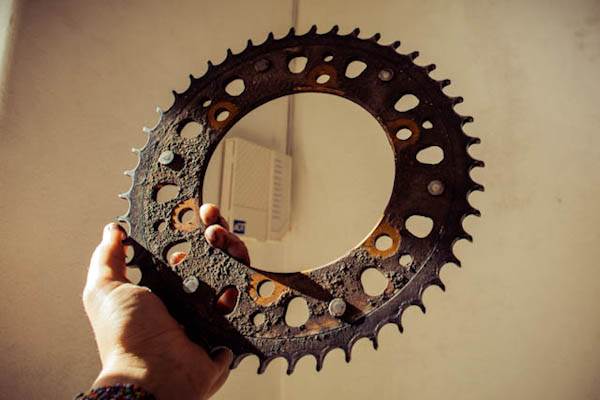
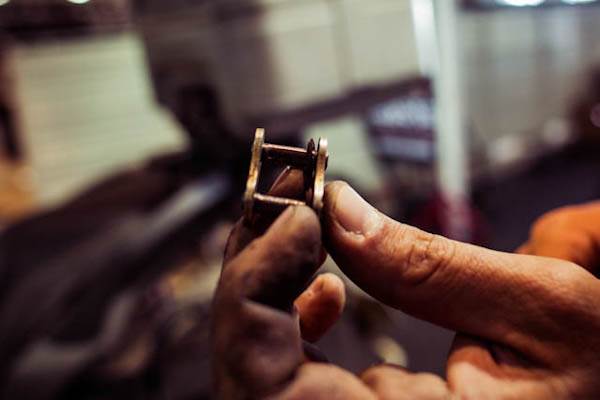
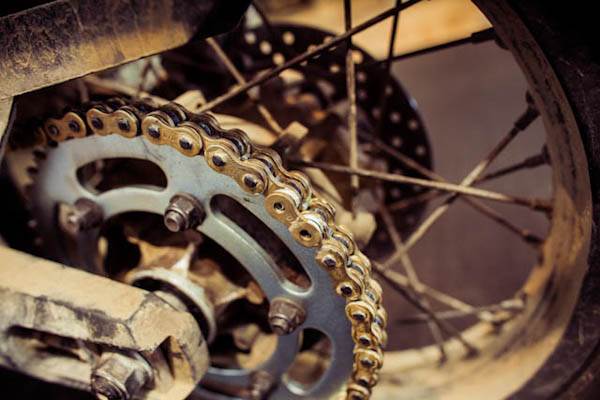
The rest of the week we chilled. We had fun playing a game that we used to wrongfully dismiss for being commercial and stupid: Guitar Hero and Rock Band. Especially for Iulia's b-day.
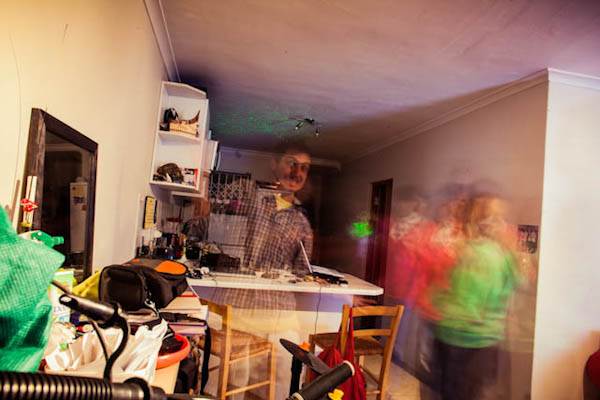
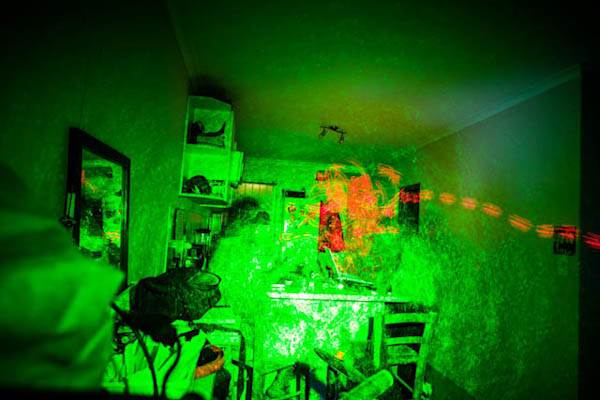
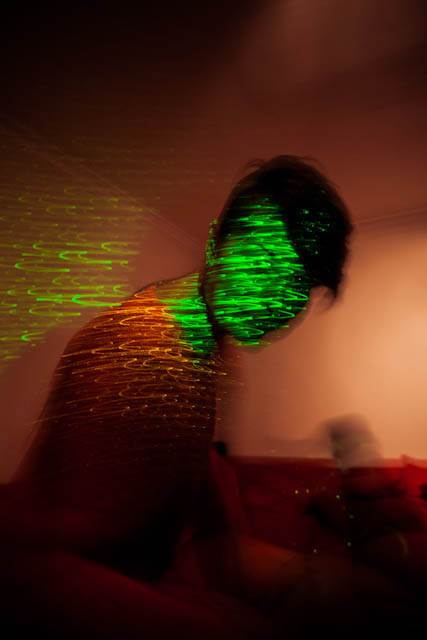
And hanged out with Charl and Carla at the legendary Blue Peter and a farmers' market, sampling local olives, olive oil, wine and biltong. The evening we braid and finally stayed over their chic crib, decorated in French country style. They are talented, sporty and ridiculously attractive people. Charl is an entrepreneur and Carla recently started a photography venture, have a look here: link facebook

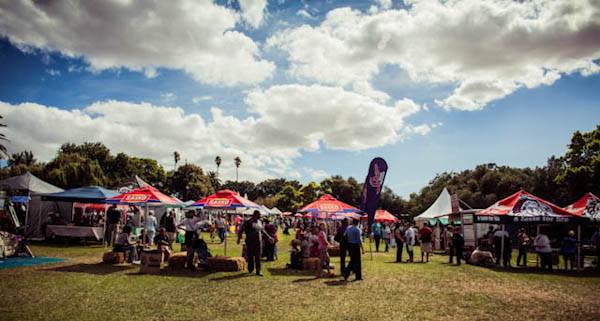

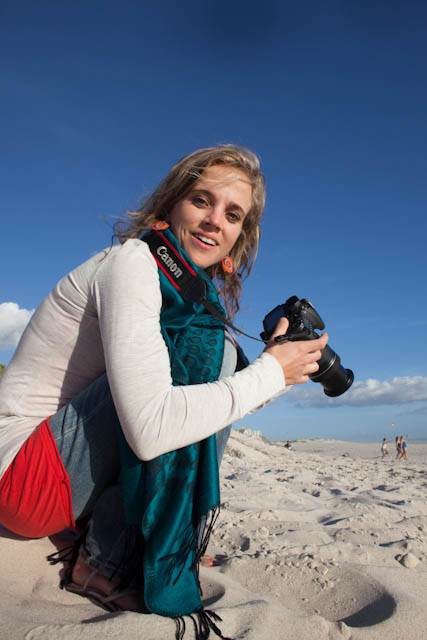
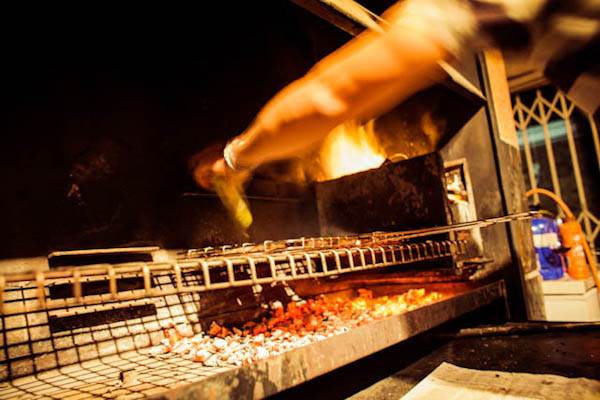
Braai
After 10 days we moved to a 'surf house' in Table View, which is exactly what the name says: a house where the kitchen, living room and toilets are shared spaces, whilst several rooms and garden cottages are rented out to long term vacationers. This was 'Endless Summer': a place located in a very quiet residential area, 200 meters from the beach with the best view of the iconic mountain. The locals have a cool name for the daily show of cloudscapes creeping on top of the flat rock: Table Cloth.

The business relies on word of mouth to attract the aficionados of some of the coolest water sports around. People from the Netherlands, Norway, France, Switzerland and the UK are flocking here in summer to surf, SUP, kite surf and windsurf. They stay anywhere between a couple of weeks to season-long terms, spending their holidays in the cold crisp waves, or enjoying other cool stuff that Cape Town and South Africa have to offer. Safaris, game drives, cage diving with great white sharks, seal snorkeling or diving, paragliding, skydiving, bungee jumping. Or wine tasting, hiking trips, or clubbing on Long Street, where party buses arrive loaded with old and young sardined together high on booze and imported weed. BTW, the dudes who appear to be selling clothing hangers at junctions, are actually in a different kind of business.
It's all good fun, but it comes at a substantial cost, way beyond our budget. We felt apprehensive about moving in this fun hub, fearing that the temptation would be too big, that we would get sucked into it. But the price of fun kept us at bay. Regrets that we couldn't enjoy the opportunity to discover some fantastic sports aside, we had to remember we were on a mission to overland. Already we had arrived there with our budget in shambles, butchered by systematic visa problems, DHL fees and enormous import duties for parts. And for the last 5 weeks we had been struggling to cope with the high costs of living in Namibia and South Africa, while still trying to enjoy some of the good stuff available.
We ended up staying longer: the magic flowed, we enjoyed cooking, relaxing in a real bed, reading books, updating our CVs and scouting for jobs in SA or elsewhere, thinking about the future and how we can solve our immediate financial problems. The long, tapering breath of Friday braai fire became a catalyst for sharing stories and making friends.
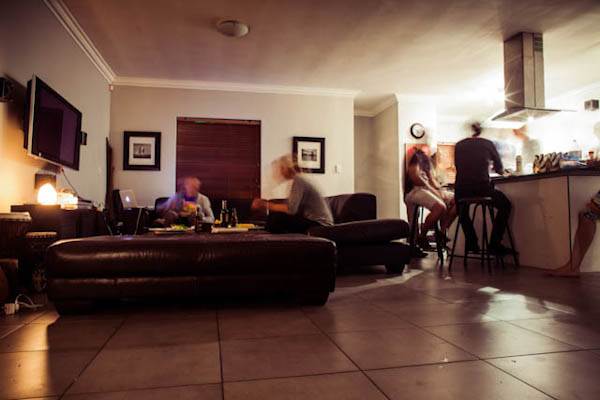

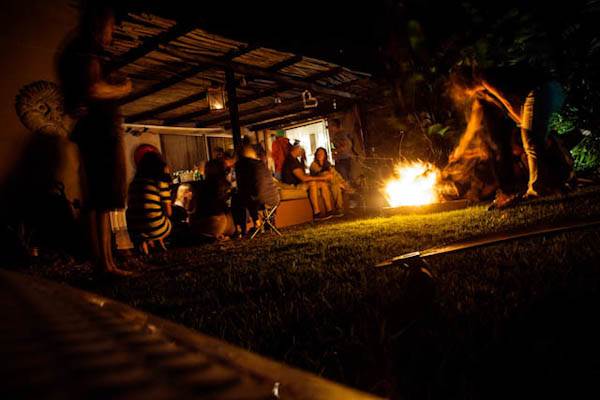

Sheree, the godmother of this joint
And how did we feel to be the first people to travel by motorbike from Bucharest to Cape Town? Well, it didn't feel like quite an achievement. Last June it was too vast to grasp, now it was too full of memories to summarize in a few words. The innumerable hours of riding, the peaceful nights wild camping, the freedom, the fragrant dawns, the breakdowns, the weeks of living and sharing everything with the French family, it all needs time and space to sunk in, to become real. I guess we felt pleased with ourselves. Whatever would happen next, we knew now something that should have been evident before we even begun to plan this journey, something that we should all know: we can do anything we truly want to do.
|

26 Apr 2012
|
|
Registered Users
Veteran HUBBer
|
|
Join Date: Mar 2010
Location: Bucharest, Romania
Posts: 117
|
|
|
Two Hundred And Seventy-five Sunrises
We have been riding across the longest inhabited continent on Earth for over 9 months, its time to share with you some interesting numbers.
As you already know, this ride is not a race. We begun in Morocco, riding from the heights of the Atlas, to the fringes of the Sahara desert. We crossed Al-Qaeda afflicted Western Sahara and Mauritania, and entered Mali via the infamous La Route de l' Espoir. After the vibrant Burkina Faso and Togo, we arrived in Benin, the land of the voodoo. In Nigeria, Africa’s economic and cultural powerhouse, we stopped to volunteer at one of the most successful captivity breeding and wildlife sanctuary projects in the world. In Cameroon we reached the lowest point of our trip - the first major technical breakdown, but also the highest –conquering Mt. Cameroon. The lush Gabon was followed in Congo by a mad rush to the border with the DRC, that was heating up after controversial presidential and parliamentary elections.
In the DRC we faced our most challenging task yet: with the Angolan borders closed for over landers, the only way out of the country was to ride over 2000 km off-road, across remote rural areas, in the middle of unforgivable equatorial rainy season. It took us 4 extreme weeks of mud, sweat and tears to arrive in Lubumbashi, the capital of the Copper Belt. We marveled at the natural wonders of Zambia and Namibia, from Victoria, the world largest waterfall, to Etosha, one of the biggest concentrations of wildlife in Africa, to Namib Naukluft, the oldest known desert and to the Fish River Canyon, world’s second largest.
During this journey we rode often in harsh conditions from deserts to high mountains, had our passports retained by corrupt officials in Mali, our GPS stolen in Morocco and got stranded with a burnt clutch on a sketchy plantation in Cameroon. We had to rebuild with the villagers a washed out bridge and to improvise from scratch a temporary fix to a broken chain, so we could ride out of a remote Congolese region. We had been bitten by Tsetse flies and suffered from malaria in the DRC and Namibia. We ate - sometimes unwillingly - unusual dishes such as porcupine, kudu, oryx, camel, grasshopper and caterpillar. We visited the ancient medinas of Meknes, Fes, Marrakech, the Roman ruins of Volubilis, the largest mud-brick building in the world in Djenne and the millennia old civilization of the Dogon. We slept in villages in Mali, Benin, Congo, DRC and in a traditional Himba kraal, but we also met the ex-president of Nigeria, Mr. Olusegun Obasanjo, while working as volunteers. We shared our wild camp under the vast African sky with desert elephants and jackals. And if riding around the continent wasn't enough, we climbed Mt Cameroon, hiked in the equatorial forest in Nigeria, into the gorge of the mighty Zambezi and up the iconic Table Mountain.
Into The World is our work in progress. Every day teaches us more, and we are continuing to improve, as we move through our over-land trials. May our humble story of travelers on a budget inspire anyone who has ever dreamt of breaking away from daily routine.
9 Months of Africa in numbers:
Journey
• Countries visited: 20 (Romania, Serbia, Croatia, Slovenia, Italy, Morocco, Western Sahara, Mauritania, Mali, Burkina Faso, Togo, Benin, Nigeria, Cameroon, Gabon, Congo Brazzaville, Congo Kinshasa, Zambia, Namibia, South Africa)
• Number of days spent on the road: 275 (10.06.2011 - 11.03.2012)
• Nights in the tent: 182 (minus 1 in car, 2 on ferry, 90 in real beds - of which 57 while volunteering in Nigeria)
• Distance covered by bike: 32 300 km
• Distance covered towed by another vehicle: 370 km
• Distance covered by public transport (bus): 600 km
• Distance covered by car: 750 km - with the Vidals in Cameroon, while bike was broken
• Distance covered together with other motorcycles: 550 km (50 ks with James and Bryce @ www.bloodsweatandbeards.com; 500 ks with Reiner from Cape Town)
• Distance covered together with other cars: 3600 km ( 700 km in Congo with Alper & Esther + 2900 km in RDC with Vidal family)
• Fuel burned: 1776 l
• Other teams of overlanders met: 7 (Nadine & Roger by Toyota Land Cruiser, Switzerland; Liana & Denis by Land Rover Defender, France; Oli & Emily by Land Rover Defender, UK; Franck by motorbike, Germany; Julien by Yamaha Super Tenere, France; Vidal family of 4 by Land Rover Defender, France; Alper & Esther by Toyota Land Cruiser, Germany; James & Bryce by BMW 650 GS, South Africa)
Records
• Most economical mileage: 4.5% @ average speed of 90 km/h off-road
• Least economical mileage: 6.5% @ average speed of 120 km/h on-road
• Highest daytime temperature: +46C (114.8F) (Nouadibou-Nouakchott road, Mauritania)
• Lowest daytime temperature : +11C (Ring Road, Cameroon)
• Record continuous riding (km): 810 (Fish River Canyon Namibia - Cape Town R.S.A.)
• Record continuous riding (hours): 13 (Namibia - R.S.A.)
• Highest speed: 147 km/h
• Highest altitude reached on foot: 4090 m (Mount Cameroon, Cameroon)
• Highest altitude reached by bike: 3050 m (Imilchil, High Atlas, Morocco)
Maintanance
• Engine oil used: 9 l
• Engine oil filters used: 2
• Air filters cleaned: 10 times
• Front tires used: 3
• Rear tires used: 3
• Punctured tires: 0
• Front brake pad sets used: 2
• Rear brake pad sets used: 4
• Rear brake disks used: 1
• Sprocket sets used: 2
• Chains used: 3
• Biking gear washed (times): 7
• Bike washed (times): 5
• Tent washed (times): 1
• Mattresses washed (times): 2
• Haircuts: 4
Problems
• Offroad crashes: stopped counting on Kinshasa - Lubumbashi off road
• Onroad crashes: 0
• Crashes with other vehicles: 0
• Stops by the police: 5 (excluding checkpoints and military posts estimated to have exceeded 100 in Morocco and Western Sahara alone, and over 100 in Nigeria alone)
• Fines for speeding: 3, never paid (Western Sahara, Zambia)
• Breakdowns: 2 (burnt clutch on Ekok - Mamfe, Cameroon; broken chain - DRC)
• Technical issues: 9 (abnormally worn chain with o-rings missing & frozen links - Morocco; plastic top box damaged & repaired in Togo; cracked rubber caliper sliders - will change in SA; broken rear brake lever - welded in Kamina, DRC; broken right mirror - DRC; gear lever - DRC; damaged frame for alu boxes - Congo; totaled alu box - DRC; totaled jerrycan - DRC; completely shaved front tyre - DRC)
• Damaged gear: 9 (tent - punctured, waterproof seams damaged, leaking; mattresses - valves broken; dry sacks punctured; bike rain cover punctured, waterproof seams damaged; helmet air vents cracked & broken; 1 pair gloves kaputt; bike pants torn in several places; Kinddle screen broken, manufacturer fault; broken GPS - Burkina Faso; inverter broken - Namibia)
• Health issues: 5 (altitude sickness - Ana @ Mt. Cameroon; malaria - Ana @ DRC; malaria - John @ Namibia;bee sting - John @ Morocco; dog bite - John @ Togo; dehydration - John @ Mauritania, Mali & Cameroon; skin ulcers caused by bacterial infection - both @ DRC; 3 fallen nails - Ana after Mt. Cameroon climb; contusions due to offroad crashes - John)
• Stolen items: 3 (GPS - Morocco; mobile phone - bus in Cameroon; radio - DRC)
• Lost items: 15 (pocket knife + whistle - Morocco, tshirt - Togo; 2 tent pins - Cameroon; metal bar for securing aluminum box - Congo Brazzaville; toothbrushes + toothpaste + floss + dry sack - Zambia; insulated water containers - Mauritania, Mali, Nigeria; plier - DRC)
Money & Visa
• Most expensive fuel: 2600 Congolese Franc/liter (2,15 Euro/l) - DRC
• Cheapest fuel: 65 Naira/liter (0,31 Euro/l) - Nigeria
• Most expensive accommodation: 25 Euro/night - lousy auberge in Kiffa, Mauritania
• Cheapest accommodation: 20 Moroccan Dirham/night (1,79 Euro) - camping near Meknes, Morocco (bushcamping is free  )
• Local SIM cards bought: 4 (Morocco, Mauritania, Nigeria, Cameroon)
• Countries with Vodafone roaming available: 5 (Morocco, Nigeria, DRC, Zambia, Namibia)
• Countries not requiring visa for Romanian citizens: 3 (Morocco, Togo, Zambia)
|
|
Currently Active Users Viewing This Thread: 1 (0 Registered Users and/or Members and 1 guests)
|
|
|
 Posting Rules
Posting Rules
|
You may not post new threads
You may not post replies
You may not post attachments
You may not edit your posts
HTML code is Off
|
|
|
|

Check the RAW segments; Grant, your HU host is on every month!
Episodes below to listen to while you, err, pretend to do something or other...

2020 Edition of Chris Scott's Adventure Motorcycling Handbook.
"Ultimate global guide for red-blooded bikers planning overseas exploration. Covers choice & preparation of best bike, shipping overseas, baggage design, riding techniques, travel health, visas, documentation, safety and useful addresses." Recommended. (Grant)

Led by special operations veterans, Stanford Medicine affiliated physicians, paramedics and other travel experts, Ripcord is perfect for adventure seekers, climbers, skiers, sports enthusiasts, hunters, international travelers, humanitarian efforts, expeditions and more.
Ripcord Rescue Travel Insurance™ combines into a single integrated program the best evacuation and rescue with the premier travel insurance coverages designed for adventurers and travel is covered on motorcycles of all sizes.
(ONLY US RESIDENTS and currently has a limit of 60 days.)
Ripcord Evacuation Insurance is available for ALL nationalities.
What others say about HU...
"This site is the BIBLE for international bike travelers." Greg, Australia
"Thank you! The web site, The travels, The insight, The inspiration, Everything, just thanks." Colin, UK
"My friend and I are planning a trip from Singapore to England... We found (the HU) site invaluable as an aid to planning and have based a lot of our purchases (bikes, riding gear, etc.) on what we have learned from this site." Phil, Australia
"I for one always had an adventurous spirit, but you and Susan lit the fire for my trip and I'll be forever grateful for what you two do to inspire others to just do it." Brent, USA
"Your website is a mecca of valuable information and the (video) series is informative, entertaining, and inspiring!" Jennifer, Canada
"Your worldwide organisation and events are the Go To places to for all serious touring and aspiring touring bikers." Trevor, South Africa
"This is the answer to all my questions." Haydn, Australia
"Keep going the excellent work you are doing for Horizons Unlimited - I love it!" Thomas, Germany
Lots more comments here!

Every book a diary
Every chapter a day
Every day a journey
Refreshingly honest and compelling tales: the hights and lows of a life on the road. Solo, unsupported, budget journeys of discovery.
Authentic, engaging and evocative travel memoirs, overland, around the world and through life.
All 8 books available from the author or as eBooks and audio books
Back Road Map Books and Backroad GPS Maps for all of Canada - a must have!
New to Horizons Unlimited?
New to motorcycle travelling? New to the HU site? Confused? Too many options? It's really very simple - just 4 easy steps!
Horizons Unlimited was founded in 1997 by Grant and Susan Johnson following their journey around the world on a BMW R80G/S.
 Read more about Grant & Susan's story
Read more about Grant & Susan's story
Membership - help keep us going!
Horizons Unlimited is not a big multi-national company, just two people who love motorcycle travel and have grown what started as a hobby in 1997 into a full time job (usually 8-10 hours per day and 7 days a week) and a labour of love. To keep it going and a roof over our heads, we run events all over the world with the help of volunteers; we sell inspirational and informative DVDs; we have a few selected advertisers; and we make a small amount from memberships.
You don't have to be a Member to come to an HU meeting, access the website, or ask questions on the HUBB. What you get for your membership contribution is our sincere gratitude, good karma and knowing that you're helping to keep the motorcycle travel dream alive. Contributing Members and Gold Members do get additional features on the HUBB. Here's a list of all the Member benefits on the HUBB.
|
|
|















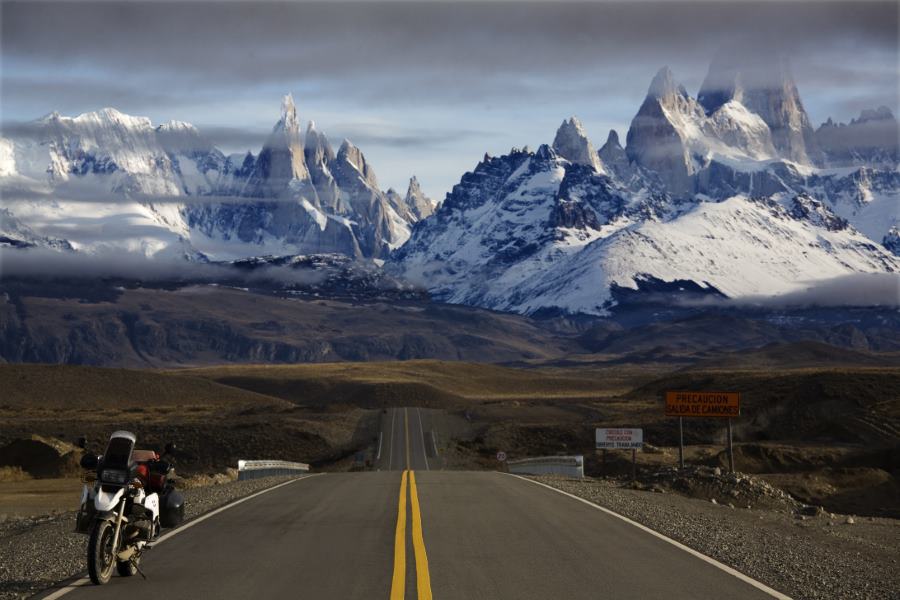

 16Likes
16Likes

























































































































 , a regular Monday was at play: people were chatting and liquid-dancing to the blasting jukebox, pool was being played with a golf ball, nickels were being dropped in the poker machine.
, a regular Monday was at play: people were chatting and liquid-dancing to the blasting jukebox, pool was being played with a golf ball, nickels were being dropped in the poker machine.












































































































































 )
) Linear Mode
Linear Mode




